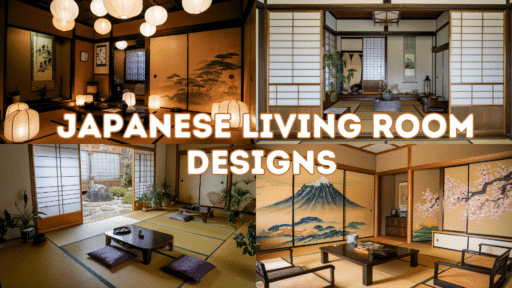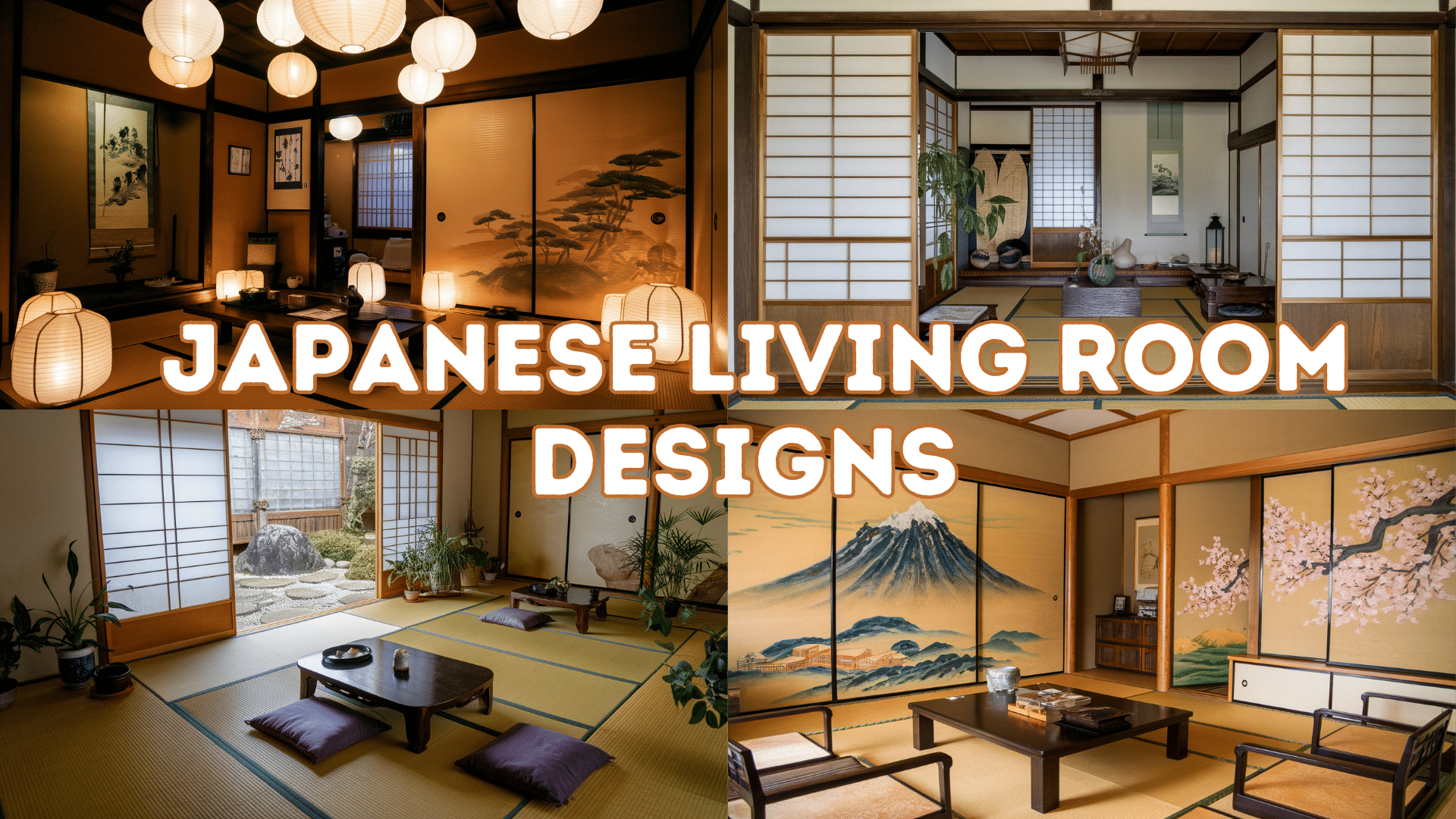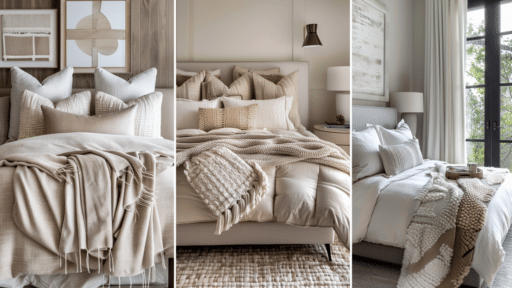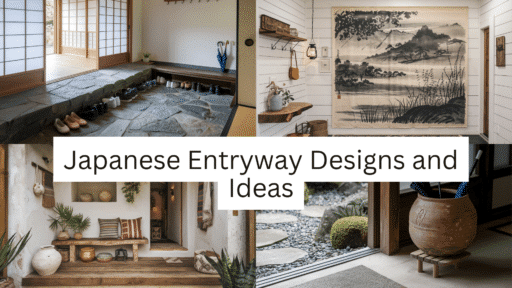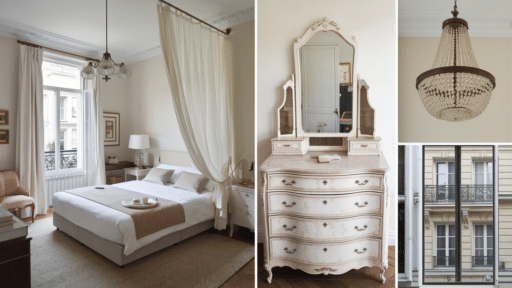Looking to give your living room a makeover? Japanese design might be exactly what you need.
It’s not just about looking good – it’s about creating a space that helps you feel calm and connected to nature after a long, busy day.
You don’t have to go all-in with a complete renovation or break the bank. The beauty of Japanese design is that even small changes can make a big difference.
You could add bamboo accents or play with natural light through paper screens. You choose; these elements can work their magic in any home, big or small.
Ready to explore? We’ve put together some incredible Japanese design ideas to help turn your living room into that peaceful spot you’ve dreamed of. Let’s jump in.
Ideas for Organizing a Japanese-Inspired Living Room
1. Asymmetrical Layouts
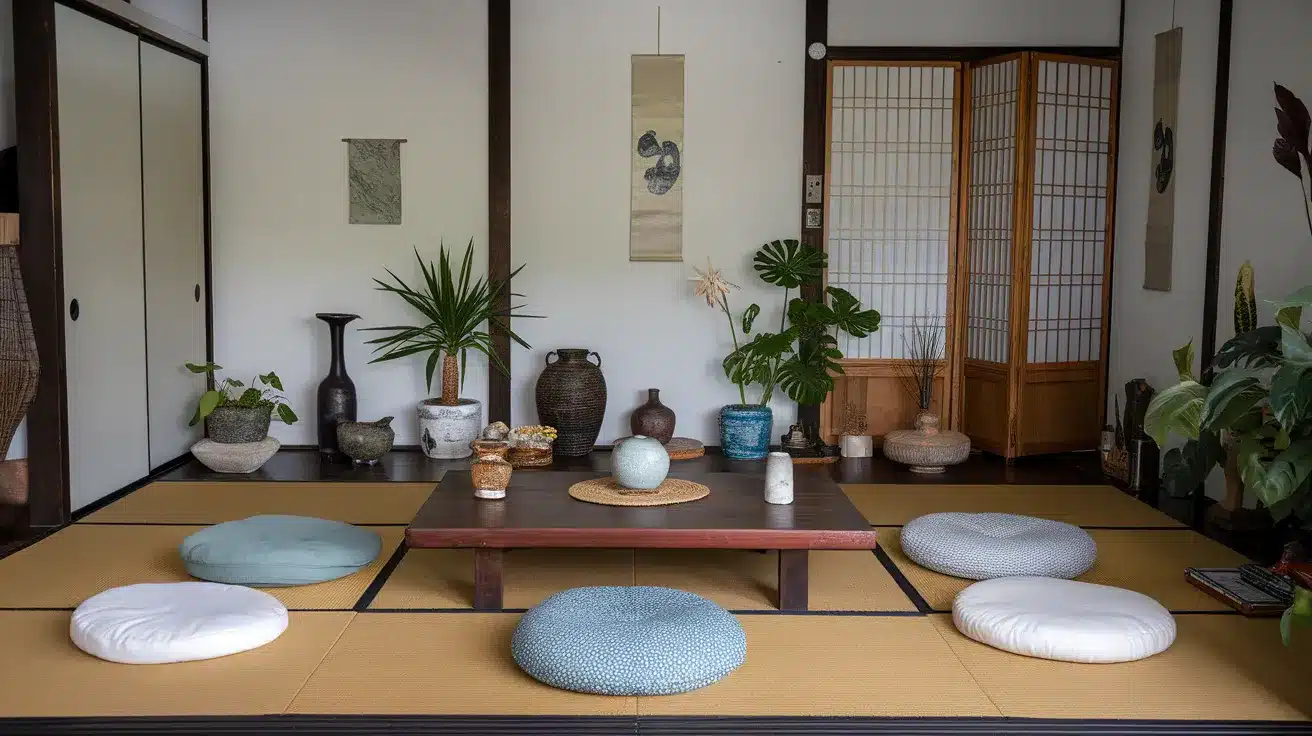
Asymmetrical layouts highlight natural imperfections and create a relaxed, balanced atmosphere. They add an organic, free-flowing design that feels connected to nature.
Key points of this idea:
- Focuses on organic arrangements that feel spontaneous.
- Ensures balance between different components of the room.
2. Bamboo Accents
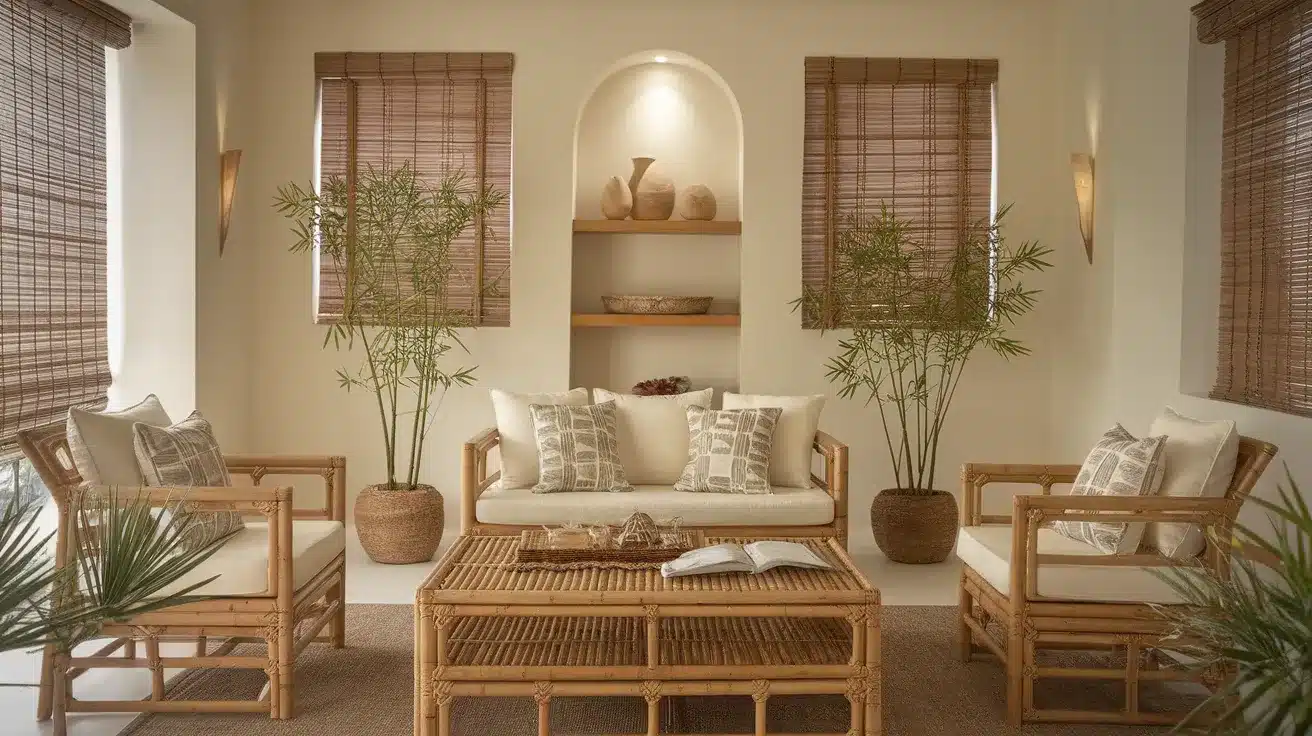
Bamboo is a traditional and eco-friendly material that is perfect for adding a touch of nature. Use it in furniture, decor, or flooring to give a natural and authentic vibe.
Key points of this idea:
- Bamboo is traditional and eco-friendly, adding a green element to your decor.
- It can be used in various forms to enhance the natural look.
3. Bonsai Plants
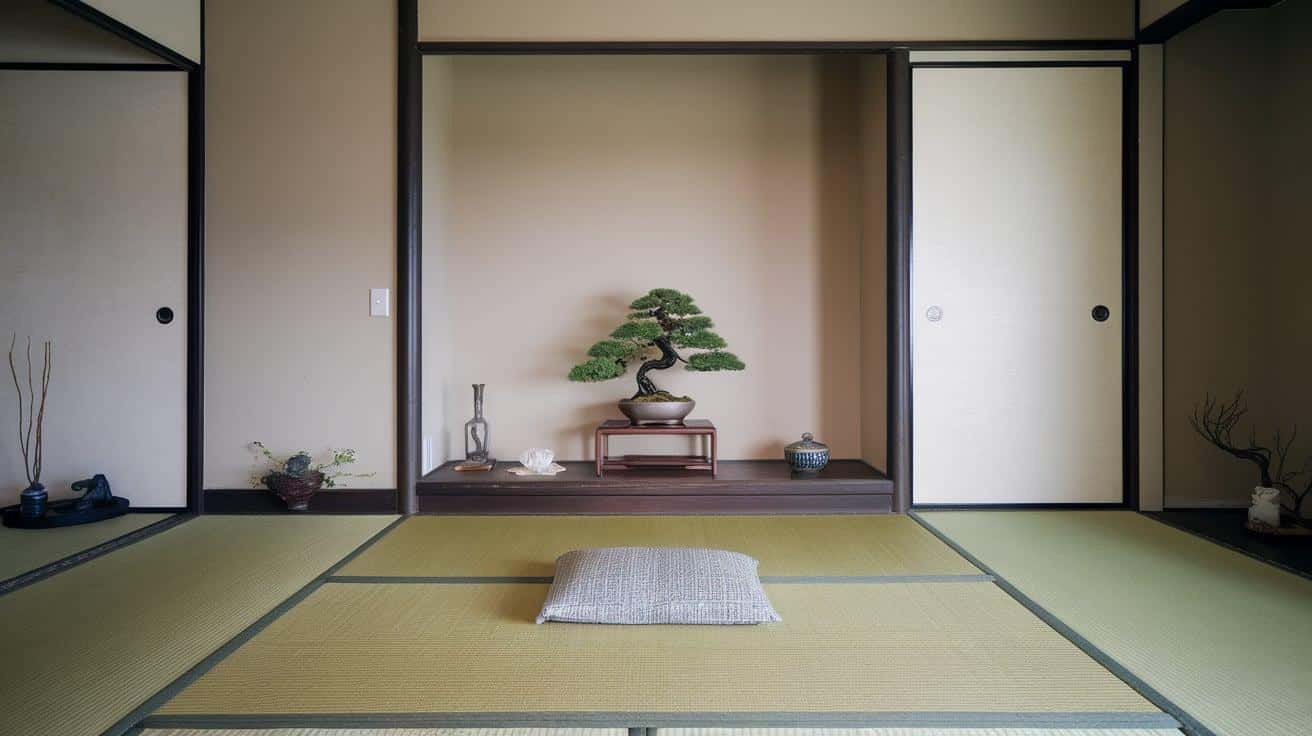
Bonsai plants bring a sense of calm and focus to your living room. These miniature trees also double as living art pieces that inspire mindfulness.
Key points of this idea:
- Reflects care and persistence through the art of bonsai cultivation.
- Acts as a central decorative element.
4. Calligraphy Art
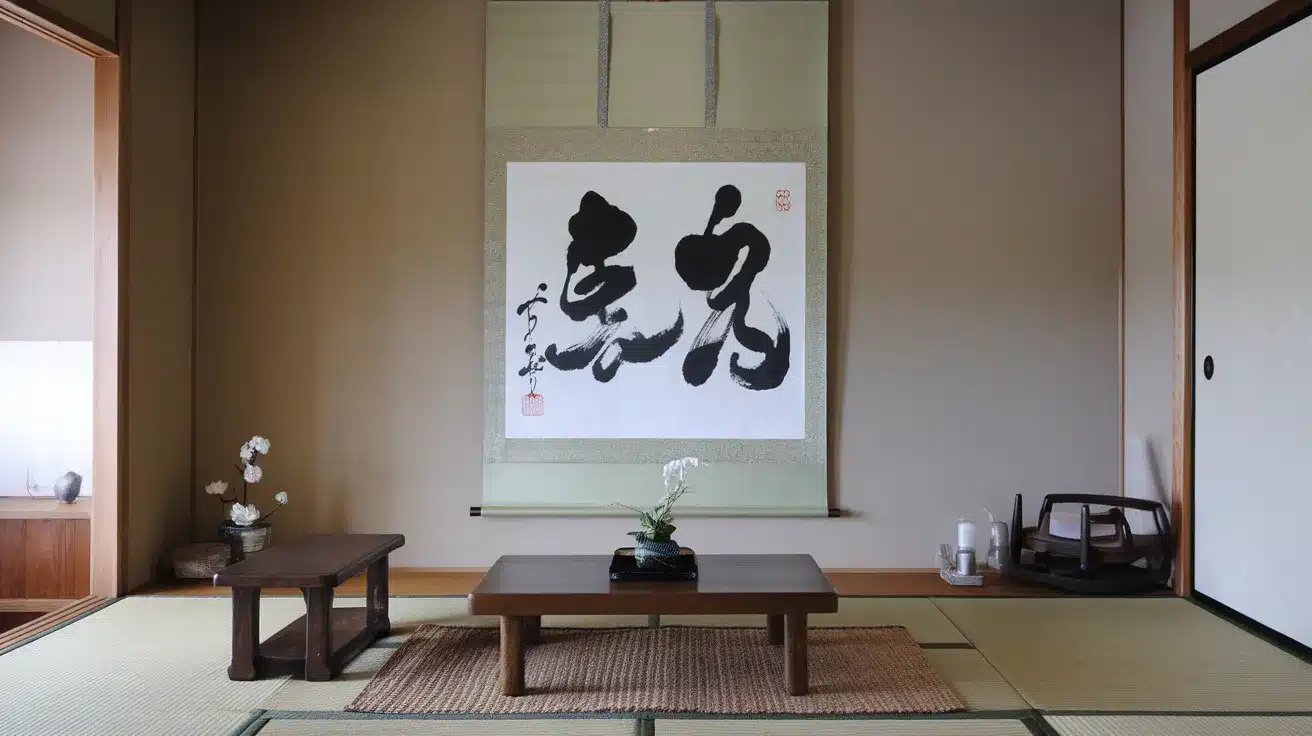
Japanese calligraphy art adds a cultural and visual focal point to your living room. Hang scrolls with meaningful characters or phrases to honor tradition.
Key points of this idea:
- Introduces a unique artistic element.
- Connects decor with traditional Japanese culture.
5. Chabudai Table
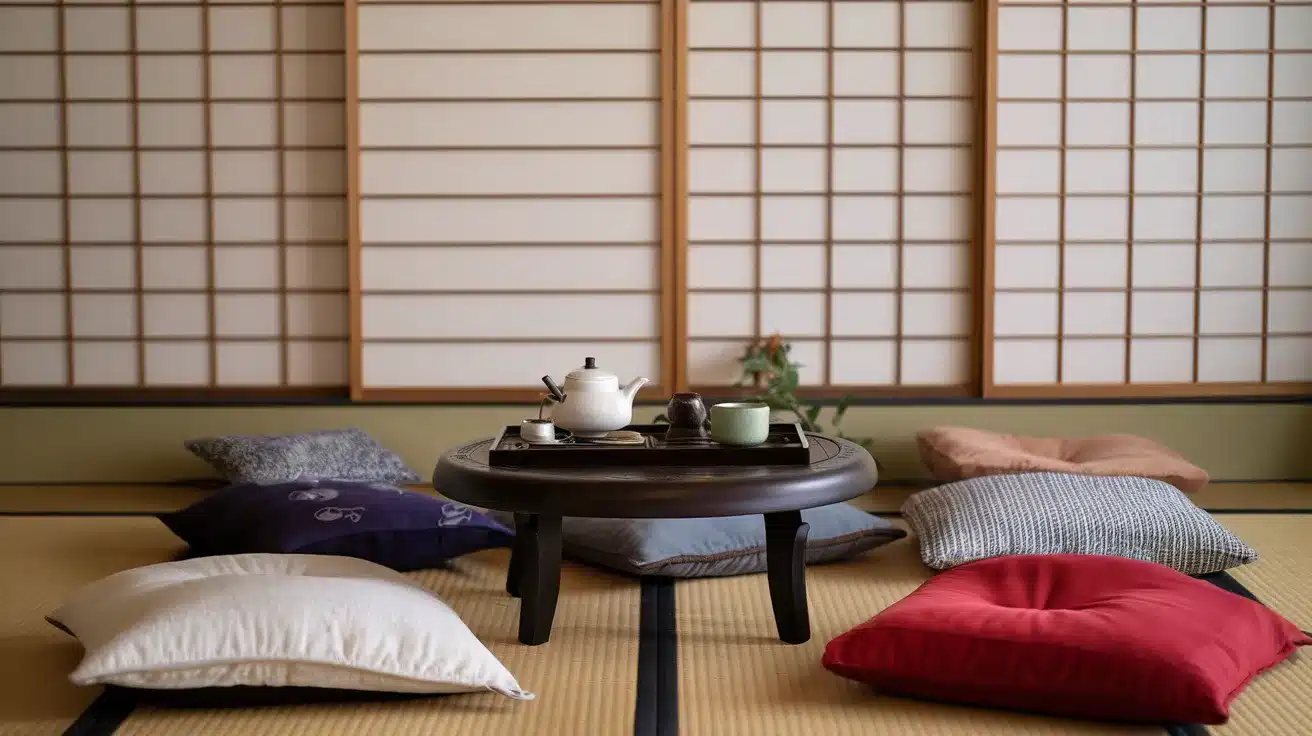
A low, traditional Japanese table like a chabudai is great for intimate seating arrangements. It emphasizes communal living and encourages floor seating.
Key points of this idea:
- Encourages communal seating and activities.
- Complements a minimalist room layout.
6. Contemporary Minimalism
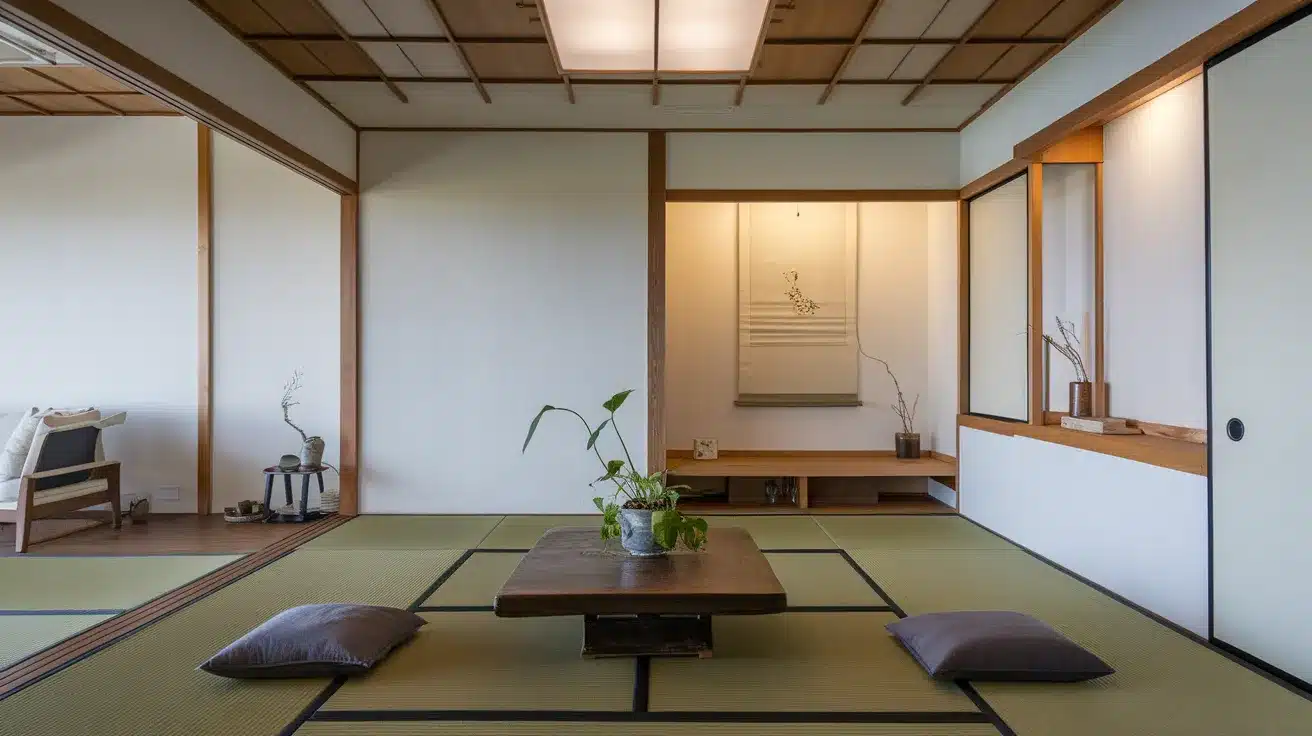
Combining modern simplicity with Japanese style creates a fresh, timeless look. The clean lines and uncluttered layout promote relaxation and openness.
Key points of this idea:
- Focuses on clean, minimal designs.
- Blends traditional and modern elements smoothly.
7. Earthen Tones
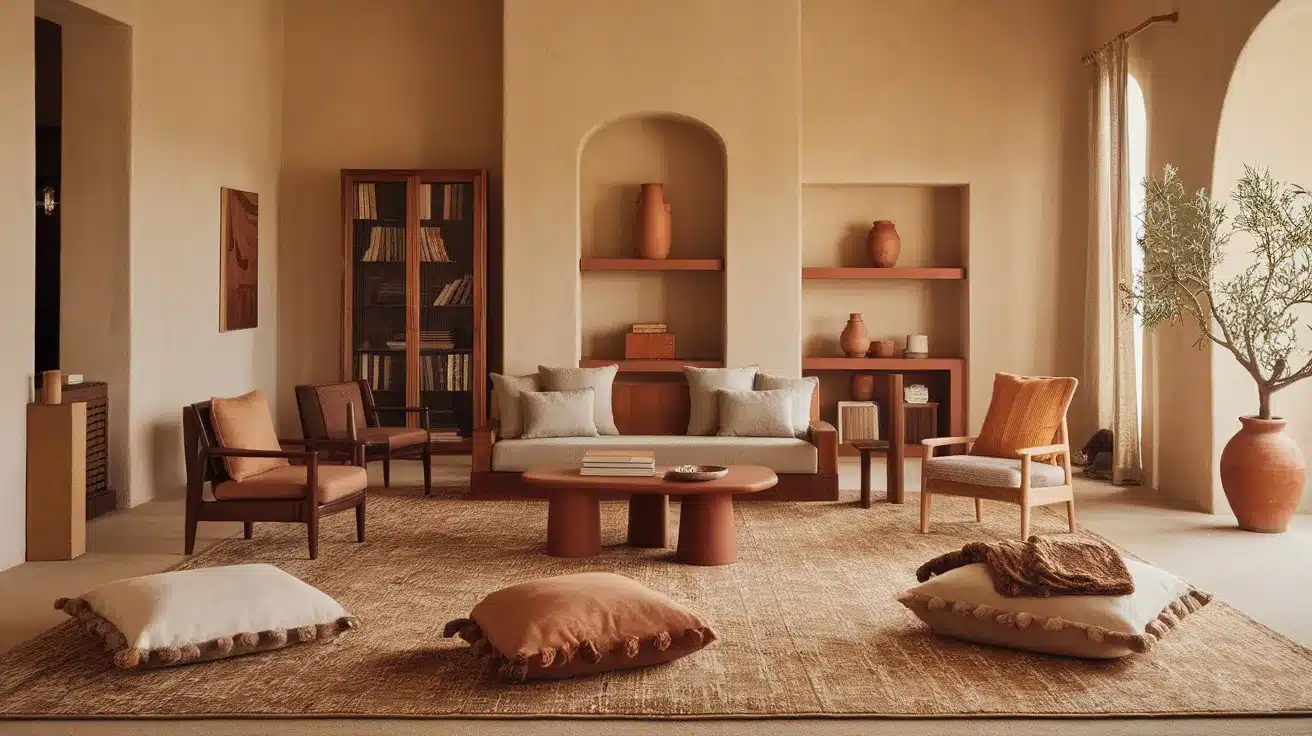
Use earthy colors like beige, brown, and soft greens to connect your space with nature. These tones add warmth and a welcoming feel to the room.
Key points of this idea:
- Creates a calm and welcoming atmosphere.
- Matches well with natural materials like wood and bamboo.
8. Folding Screens (Shoji)
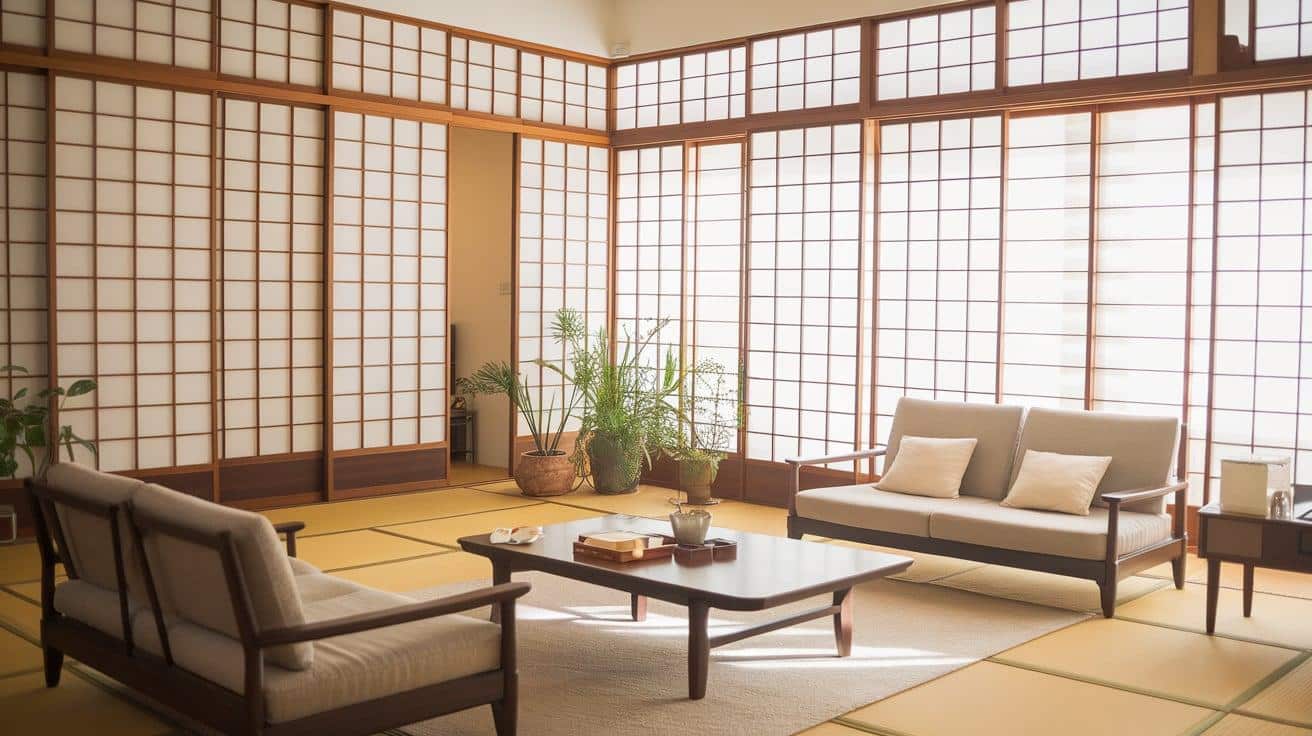
Shoji screens are iconic for dividing spaces without blocking light. They’re versatile and can be used for privacy or purely decorative purposes.
Key points of this idea:
- Allows light to filter through, maintaining a light atmosphere.
- Offers flexibility in room arrangement.
9. Futon Sofas
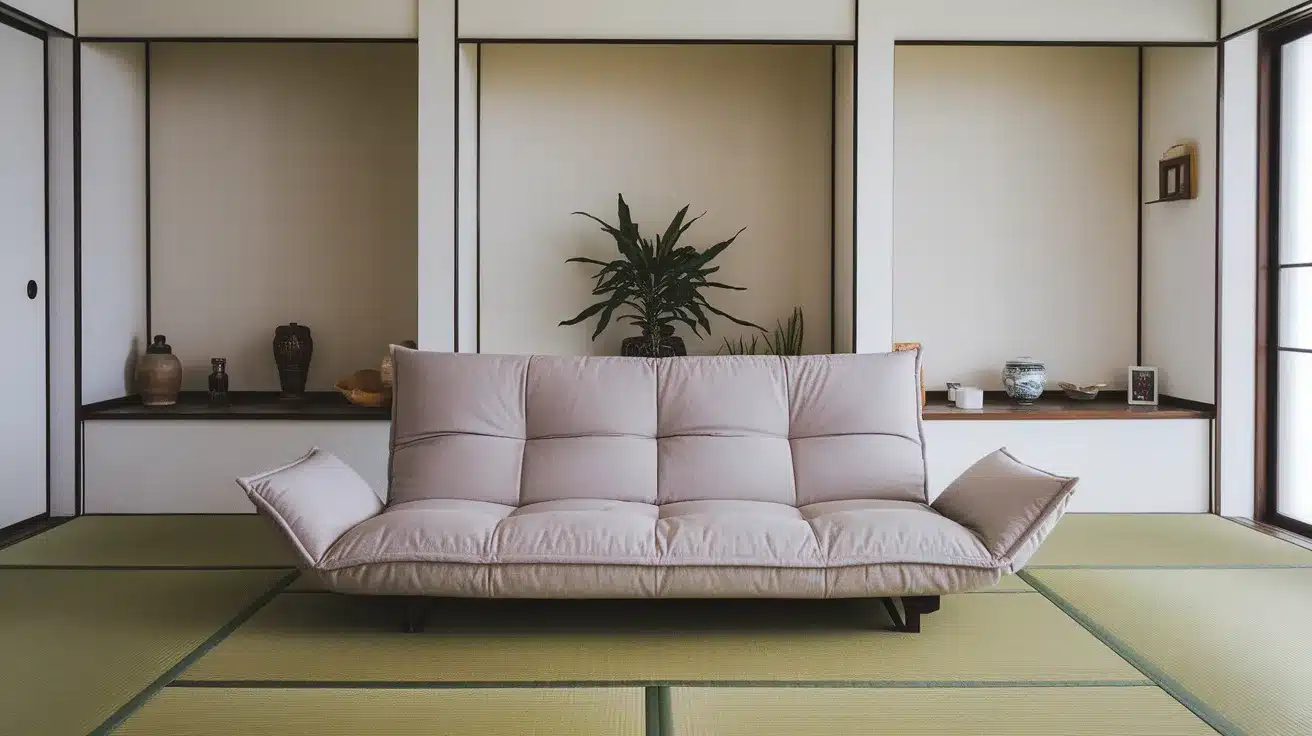
Futons are practical for seating or sleeping in small spaces. Their compact design makes them perfect for minimalist layouts and multipurpose rooms.
Key points of this idea:
- Provides practical and comfortable seating.
- Aligns with the minimalist theme of Japanese design.
10. Genkan Entryway
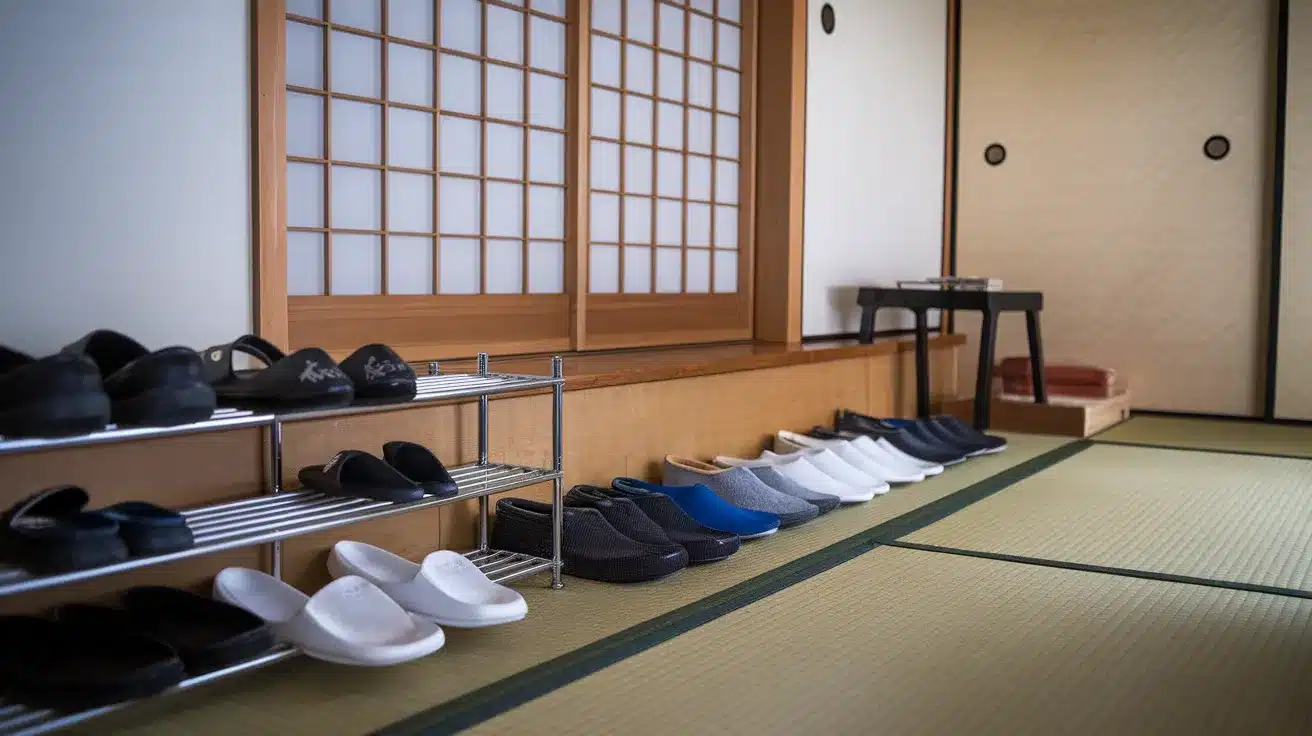
A Genkan entryway creates a clean and organized area for guests to remove their shoes. It maintains cleanliness while introducing a welcoming space for visitors.
Key points of this idea:
- Encourages cleanliness and order at the home’s entrance.
- Provides a space to store shoes neatly.
11. Hanging Scrolls
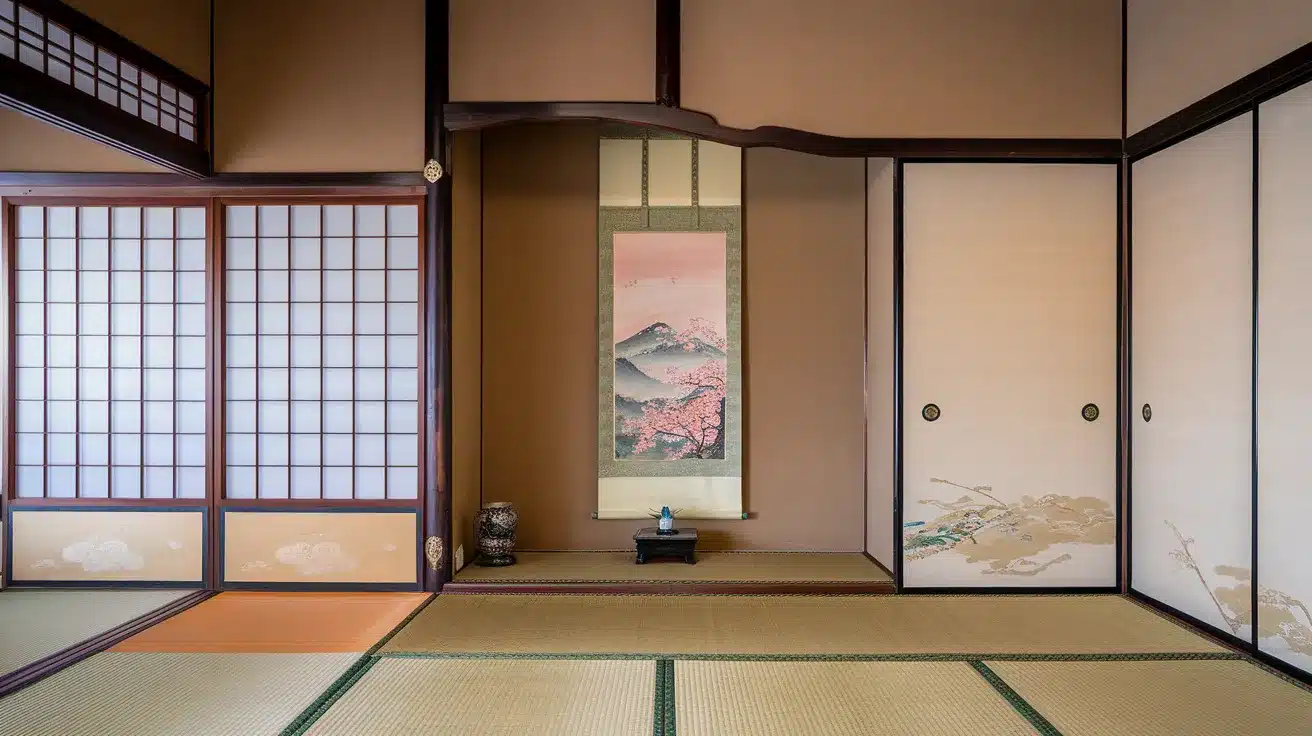
Hanging scrolls with traditional Japanese art or poetry brings a cultural element to the room. They serve as subtle yet meaningful decorations that draw attention.
Key points of this idea:
- It adds a cultural and decorative touch.
- Offers a peaceful visual element to the room.
12. Indirect Lighting
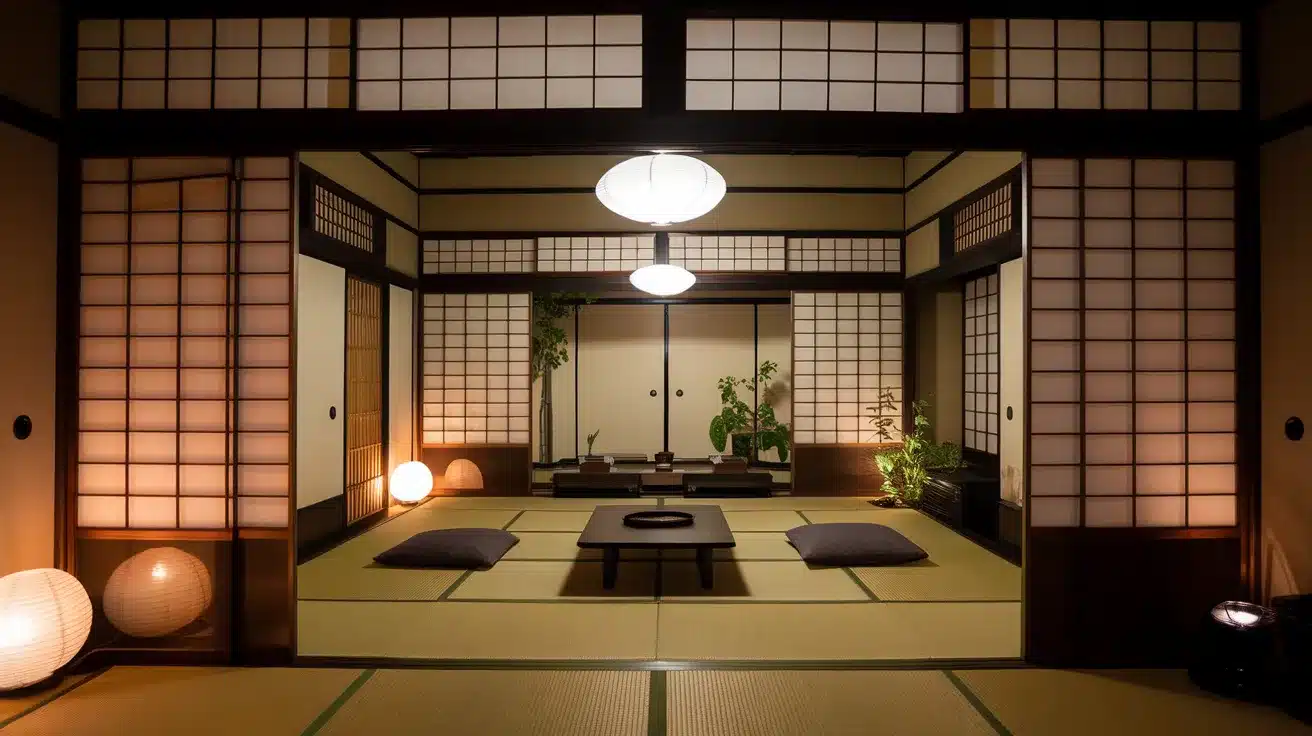
Indirect lighting sets a calm and cozy tone in the room. It avoids harsh overhead light and instead creates a soft, welcoming glow.
Key points of this idea:
- Softens the overall light in the room.
- Enhances the room’s comfort and warmth.
13. Intricate Woodwork
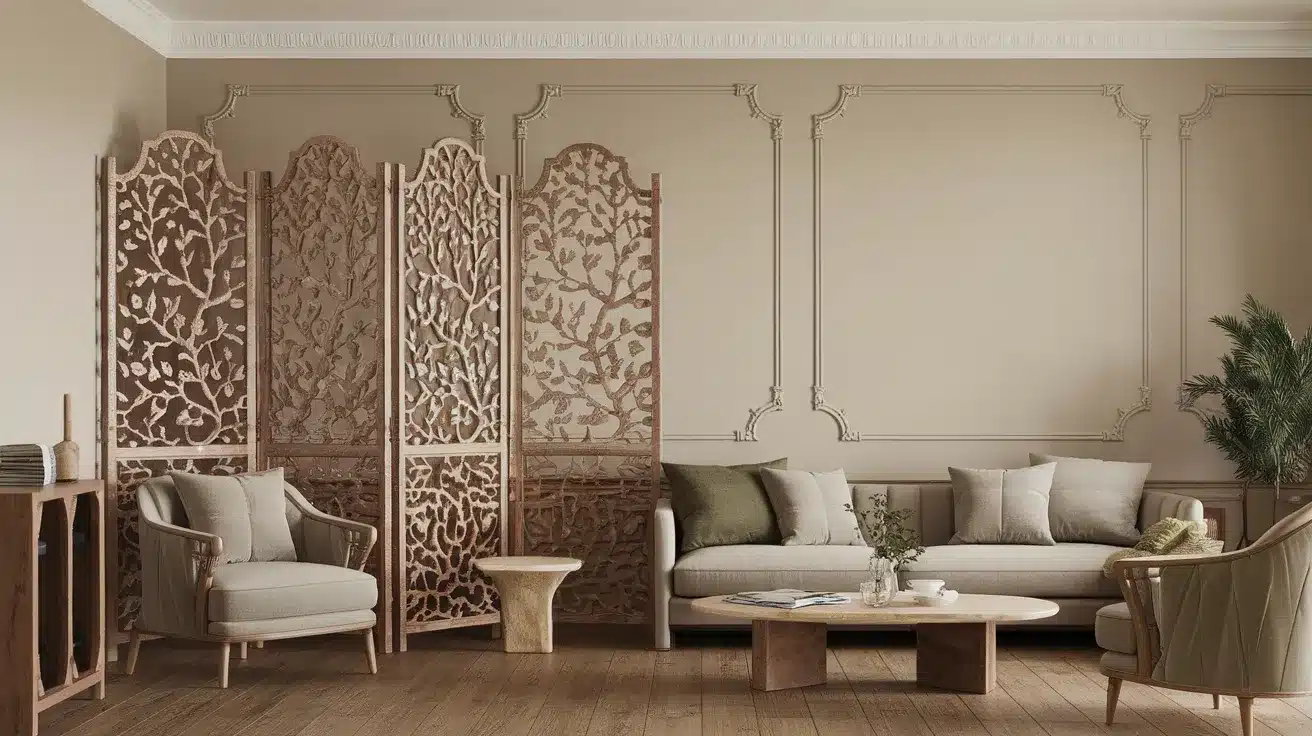
Detailed woodwork on furniture or walls adds texture and character to the room. It reflects craftsmanship while enhancing the overall design.
Key points of this idea:
- Adds visual interest and texture.
- Showcases craftsmanship.
14. Kakejiku Artworks
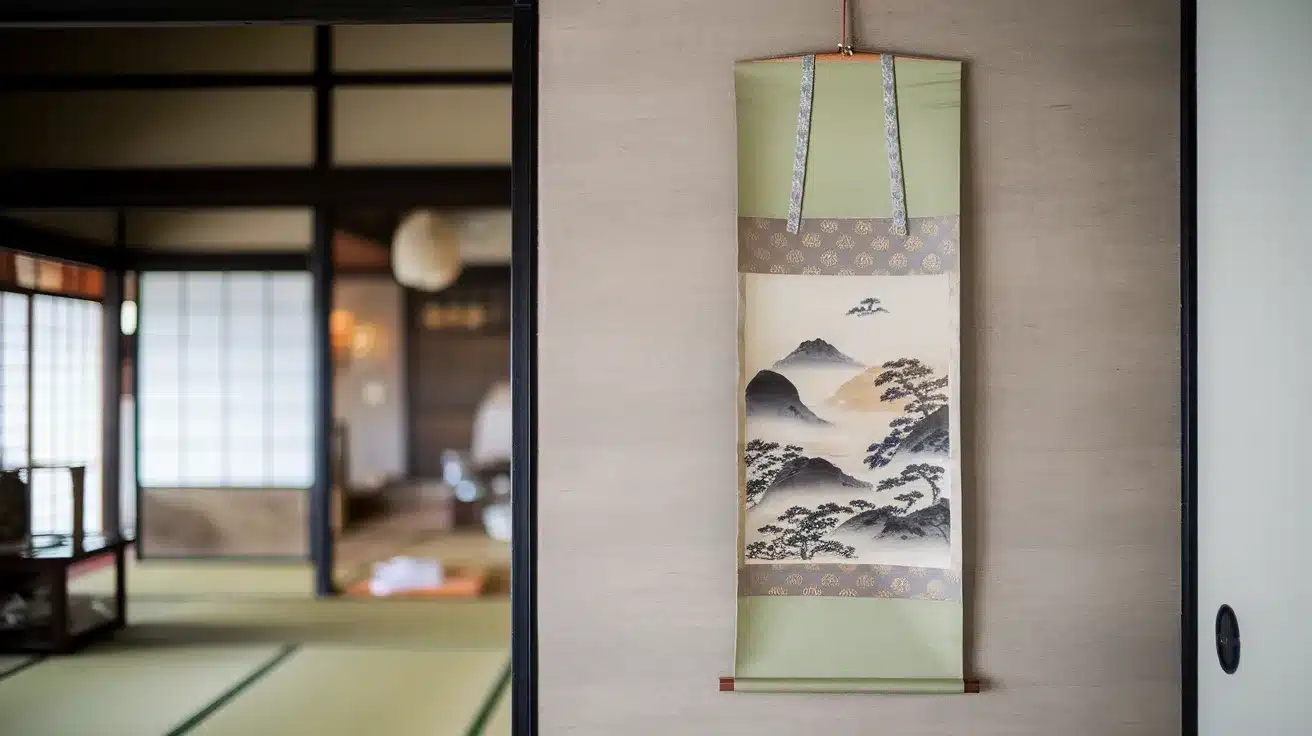
Kakejiku, or vertical scrolls, are perfect for showcasing Japanese calligraphy or landscapes. They make a strong cultural statement while decorating walls beautifully.
Key points of this idea:
- Bring traditional Japanese art into the room.
- Serves as a focal point in the decor.
15. Kotatsu Table
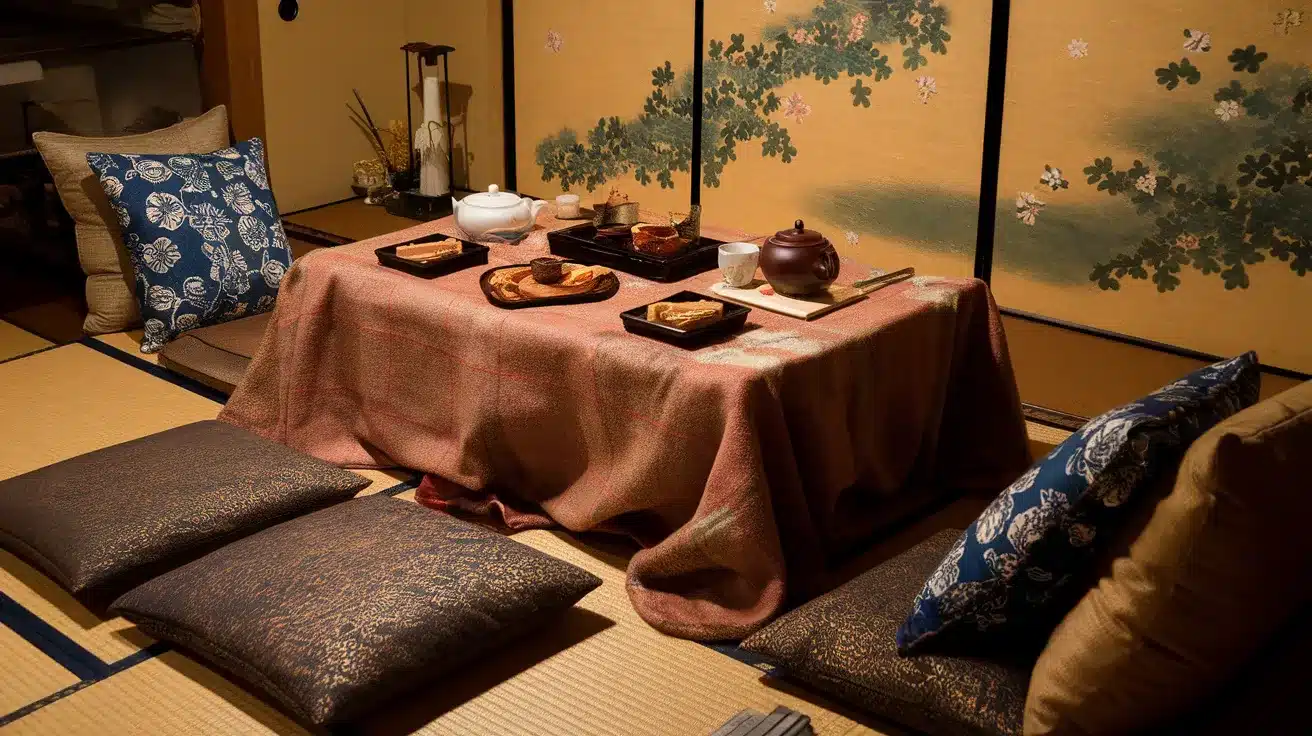
A kotatsu table is a heated table perfect for cozy winter gatherings. It doubles as a seating area while adding warmth to the space.
Key points of this idea:
- Ideal for colder months.
- Encourages gathering and spending time together.
16. Low Plush Seating
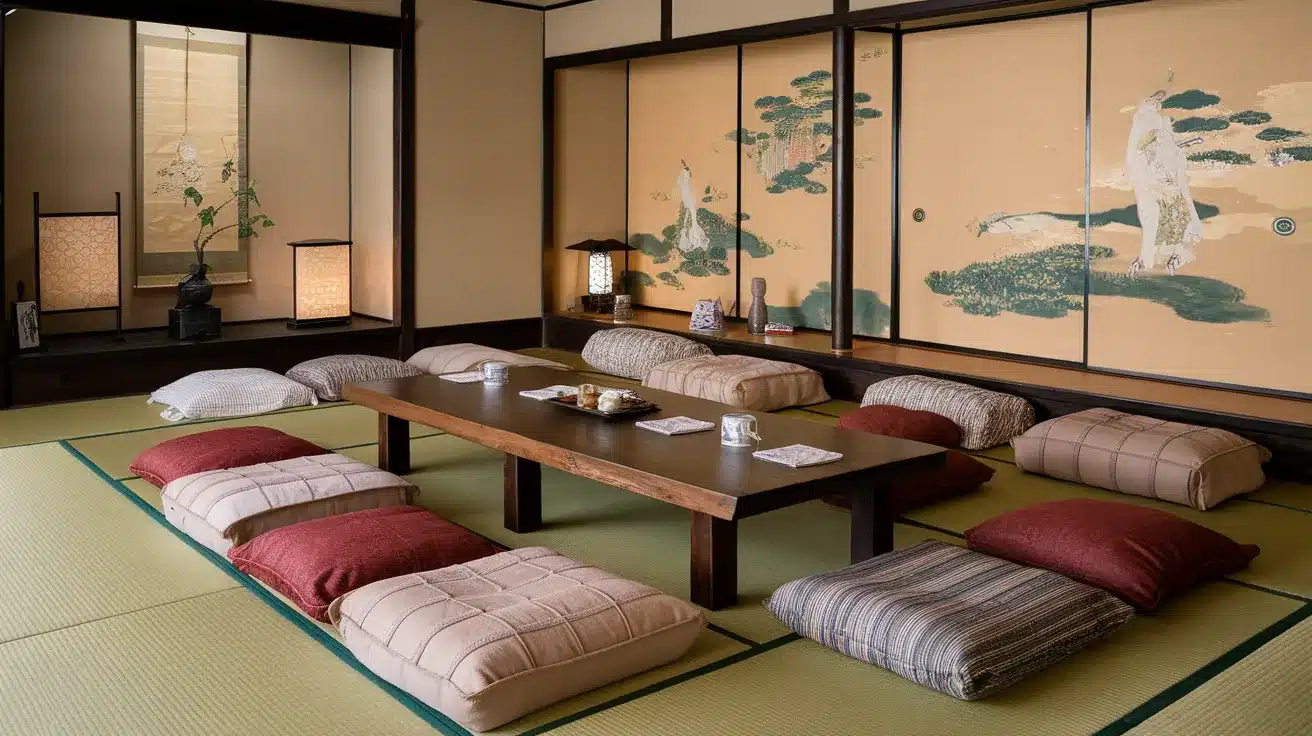
Low seating, like floor cushions or poufs, gives the room a relaxed vibe. It also enhances the spaciousness of the space, making it feel larger and more open.
Key points of this idea:
- Promotes a relaxed and informal atmosphere.
- Makes the room appear larger.
17. Minimalist Shelving
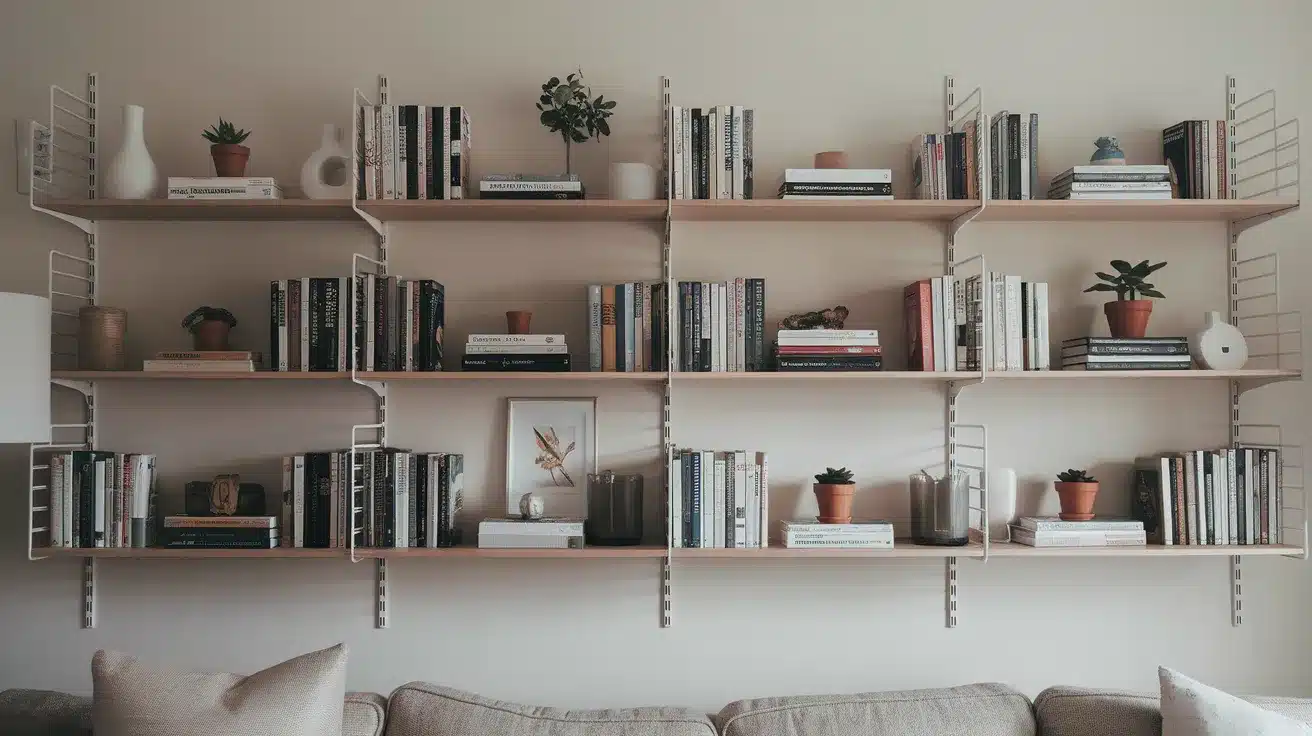
Minimalist shelving helps keep your space clutter-free and tidy. These shelves are functional and enhance the simplicity of the overall design.
Key points of this idea:
- Helps maintain a clutter-free space.
- Aligns with the minimalist approach to design.
18. Mixed Textures
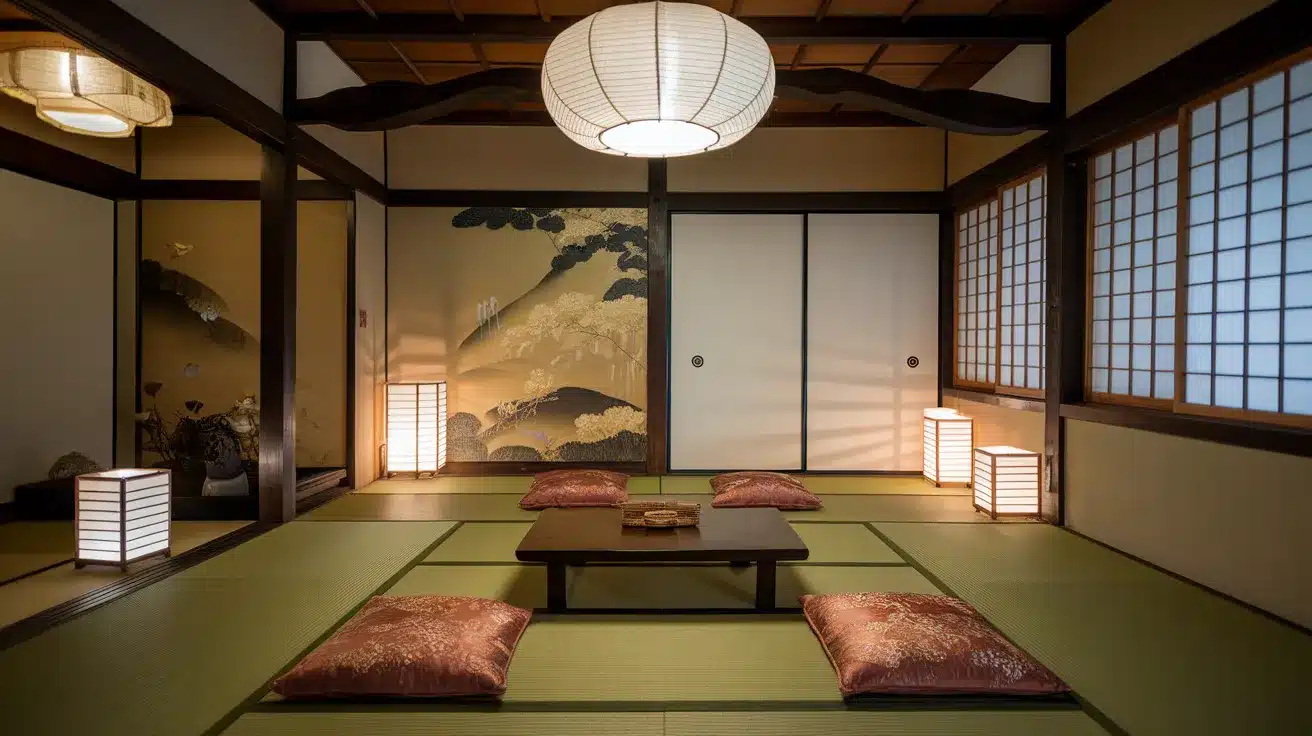
Incorporating textures like wood, tatami, and silk adds variety and richness to the room. It creates a visually interesting and cozy environment.
Key points of this idea:
- Adds depth and interest.
- Increases comfort through varied tactile experiences.
19. Modern Art Blends
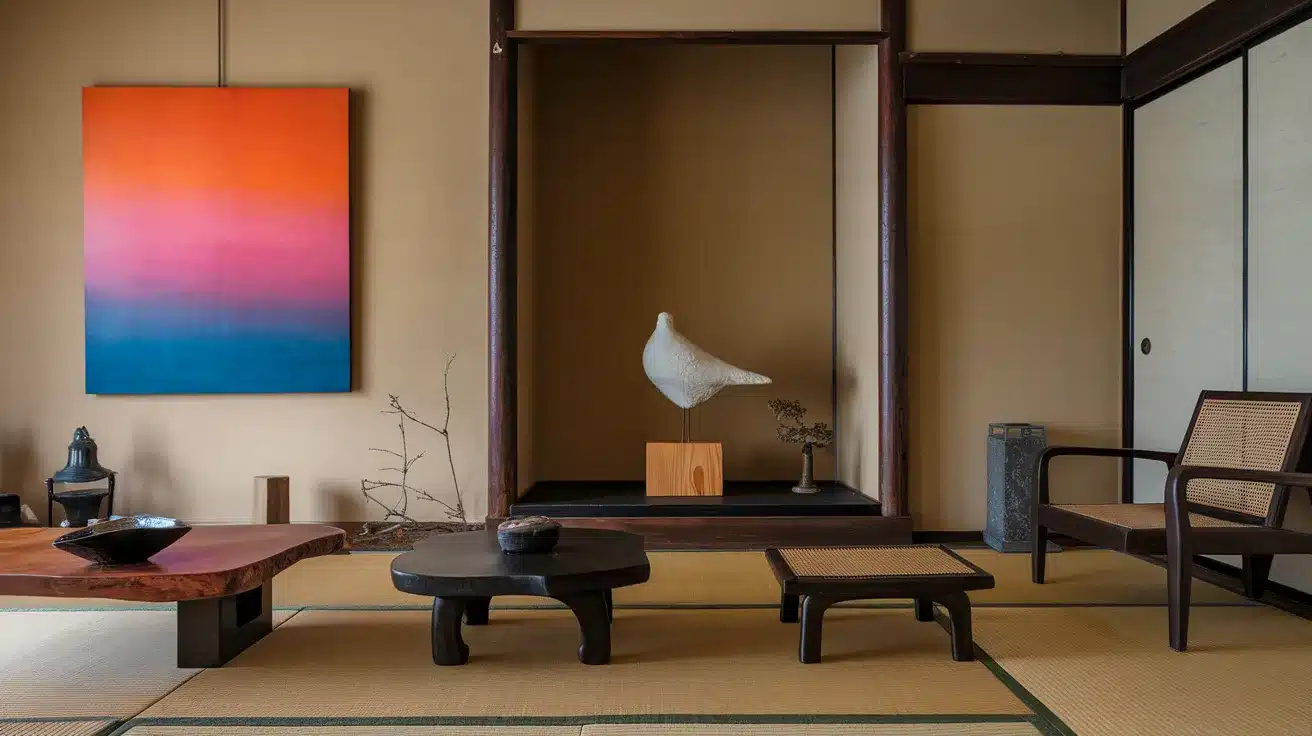
Combining modern art pieces with Japanese decor adds a contemporary touch. It keeps the design fresh while staying connected to the traditional theme.
Key points of this idea:
- Introduces contemporary visuals that complement traditional themes.
- It keeps the room’s decor updated and lively.
20. Natural Fabric Curtains
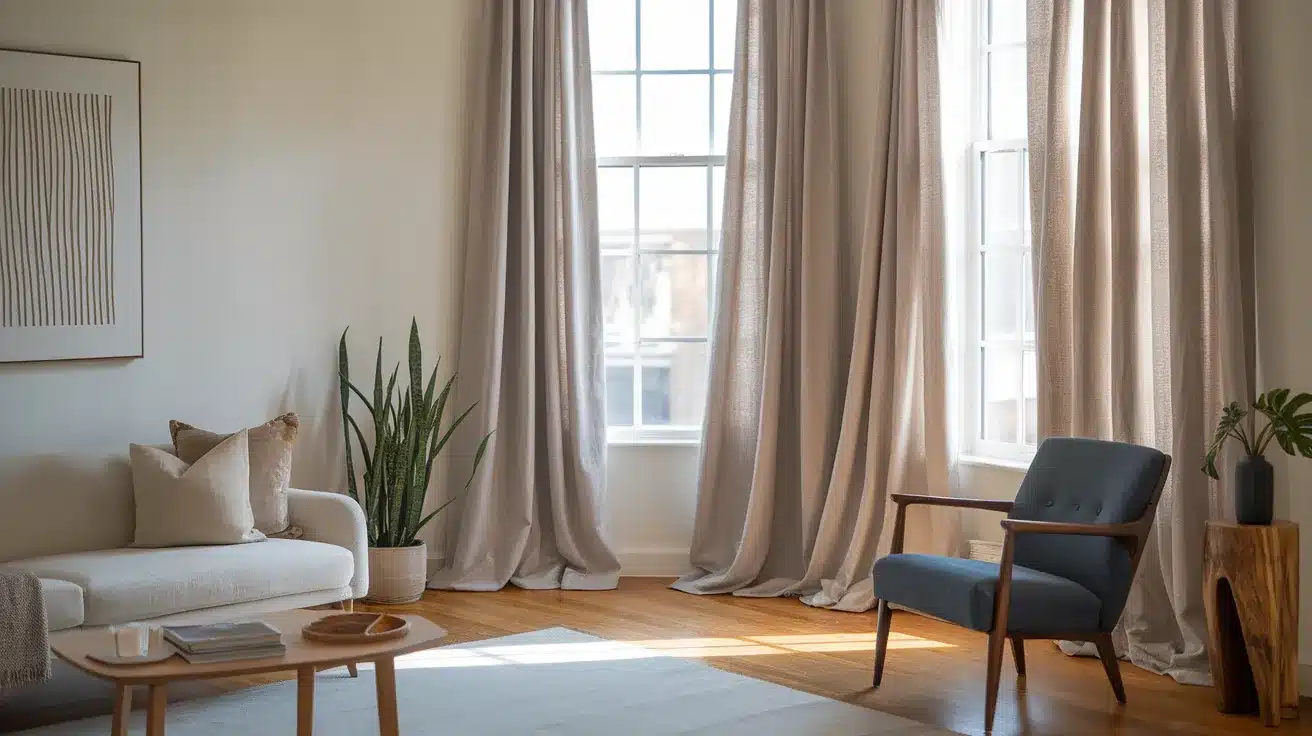
Curtains made of natural fabrics like cotton or linen soften the room’s look. They provide privacy while letting in enough natural light to maintain brightness.
Key points of this idea:
- It enhances the room’s natural feel.
- It provides privacy while keeping the space light and airy.
21. Neutral Color Palette
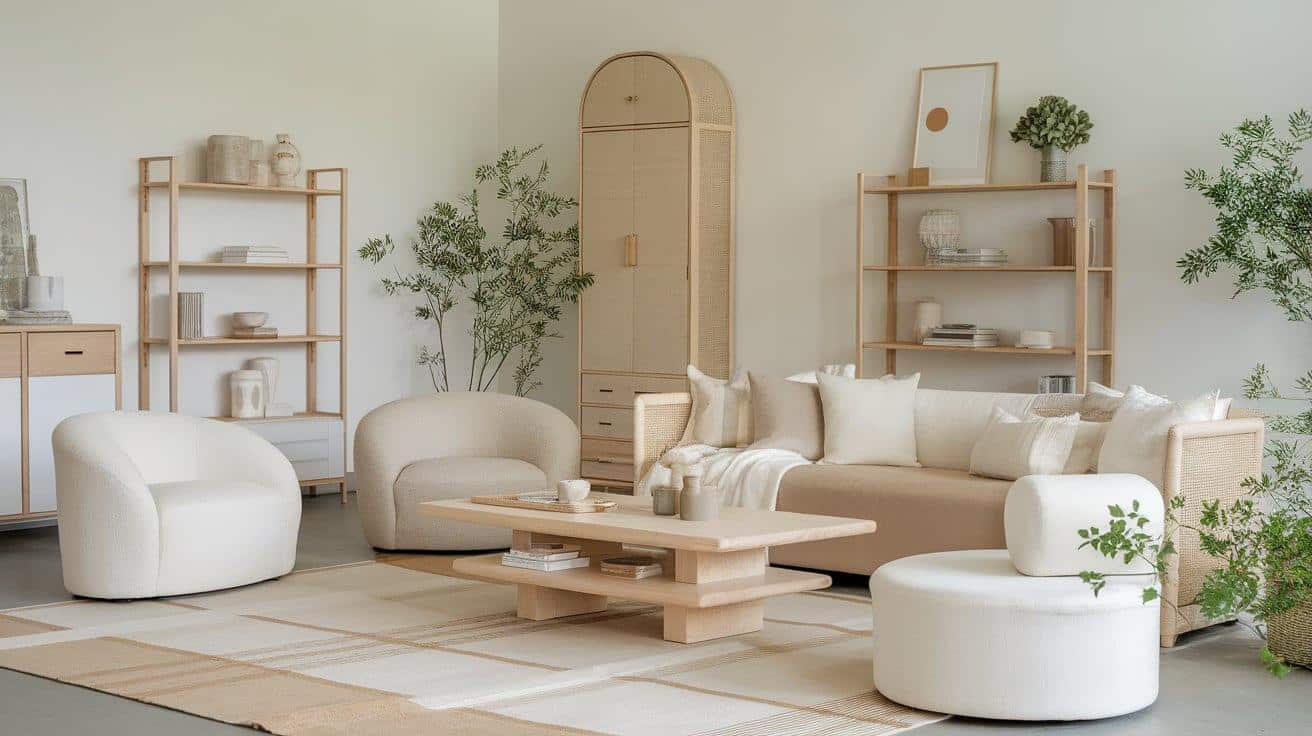
A neutral palette of whites, beiges, and soft grays creates a calming and spacious environment. It also blends well with natural materials.
Key points of this idea:
- It makes the room feel more spacious and open.
- Easy to match with various decorative elements.
22. Open Floor Plan
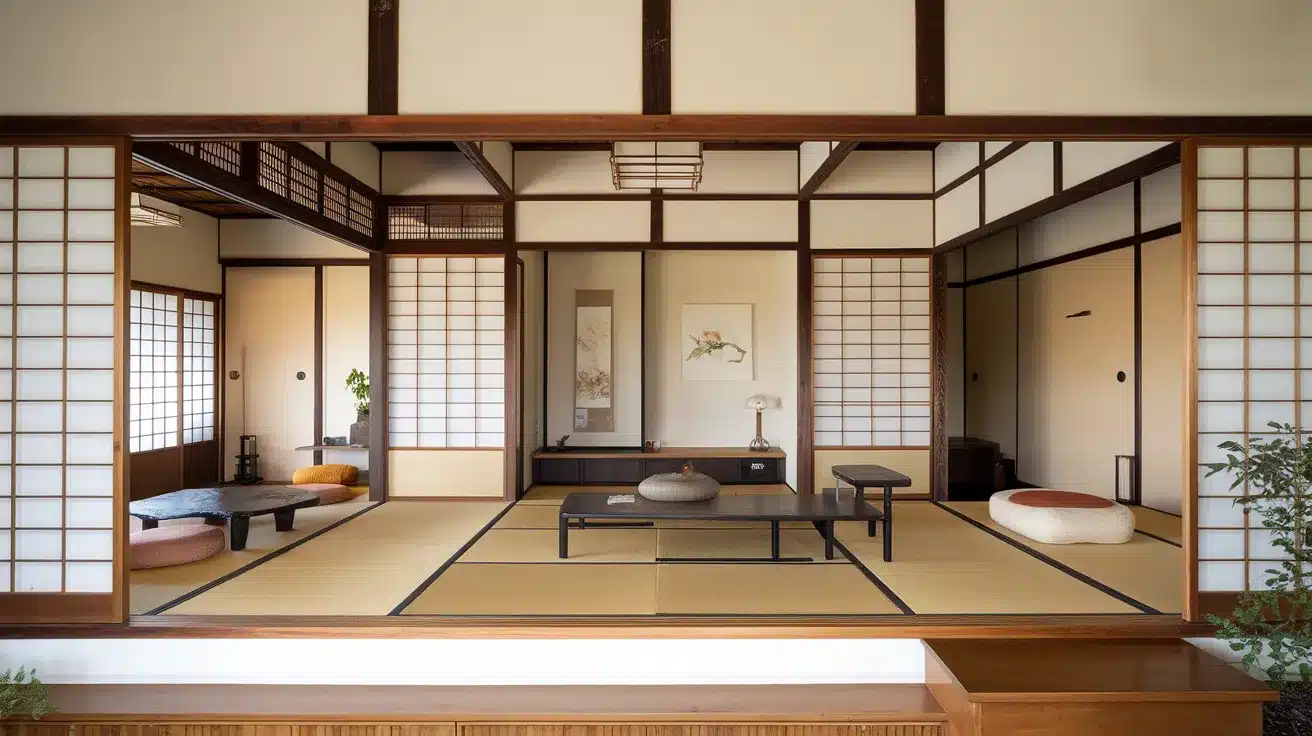
An open floor plan removes barriers to create a larger, more connected living space. This design encourages free movement and interaction.
Key points of this idea:
- Promotes easier movement and social interaction.
- Makes the living space feel larger and more welcoming.
23. Paper Lanterns
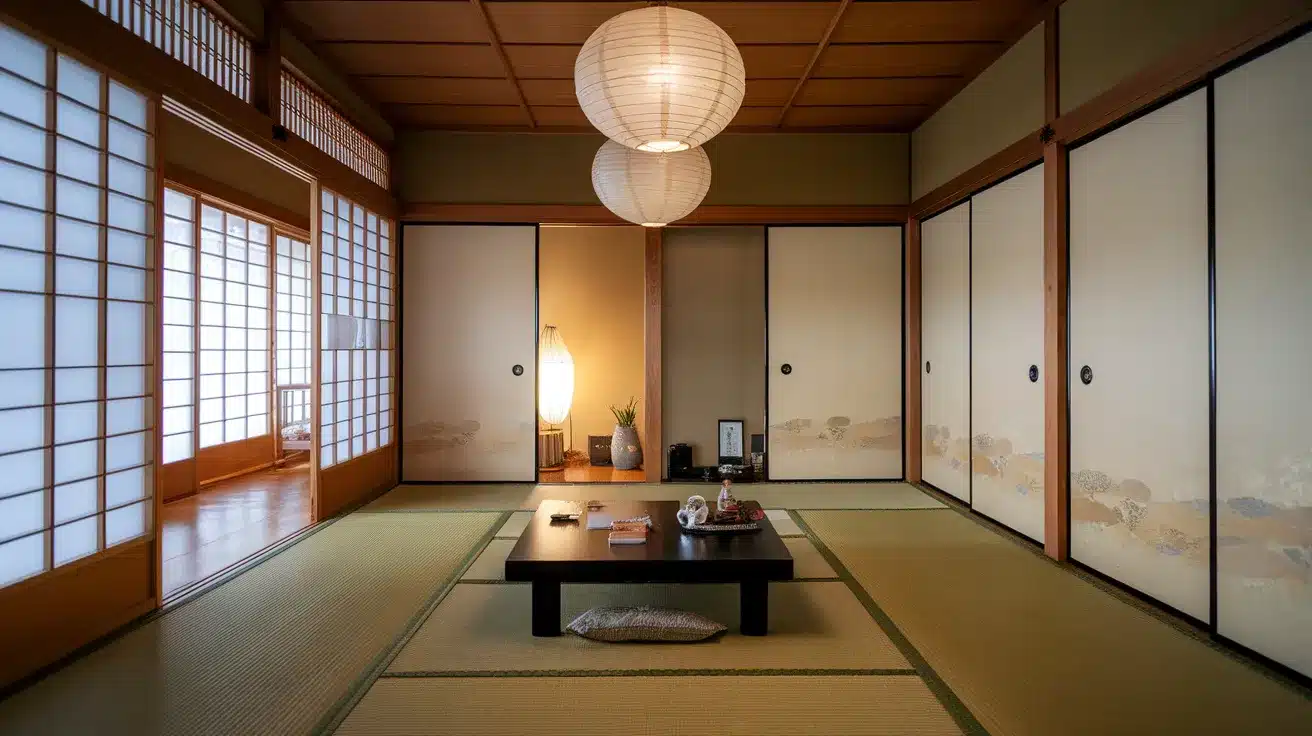
Paper lanterns provide soft, diffused lighting while adding a decorative touch. They are lightweight and easy to hang, making them a flexible choice for lighting.
Key points of this idea:
- Offers a traditional lighting solution.
- Creates a warm and inviting atmosphere.
24. Raised Tatami Floors
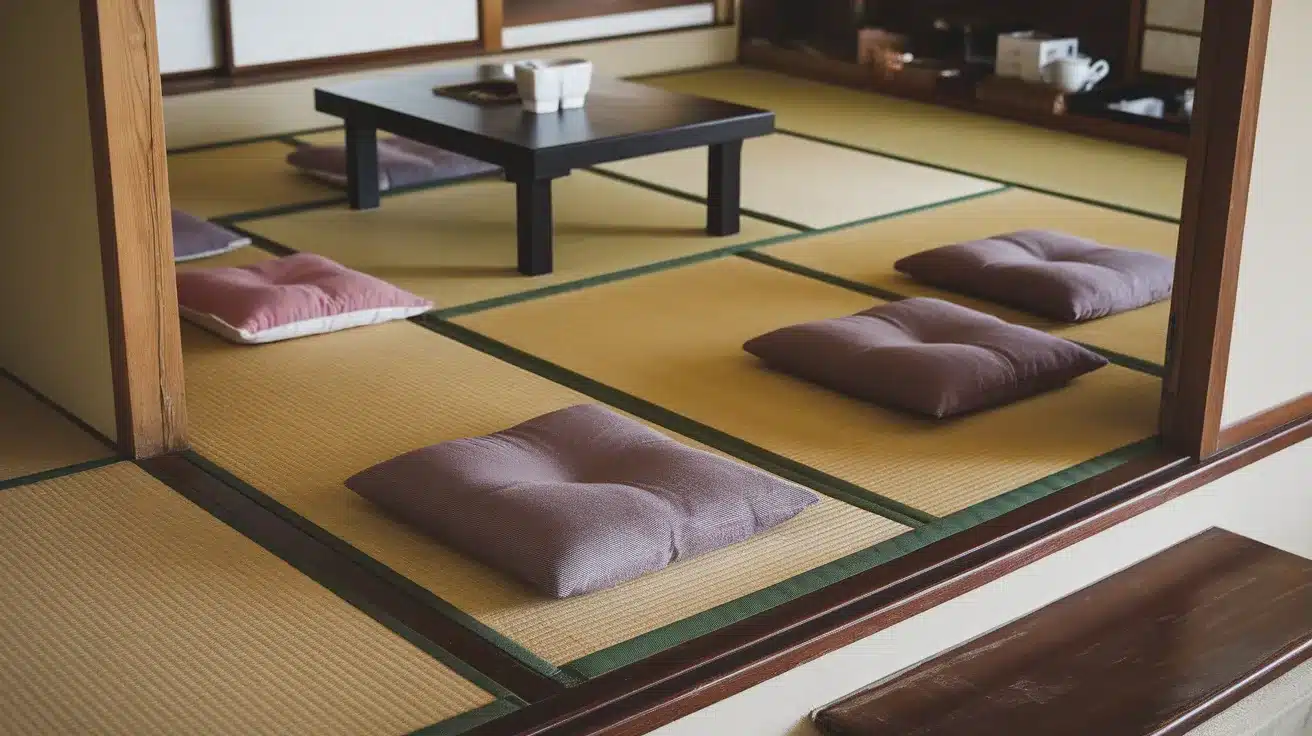
Raised tatami floors create a defined seating or resting area. They provide a traditional Japanese look while offering functionality and comfort.
Key points of this idea:
- Distinguishes different areas of the room without using walls.
- Provides a traditional Japanese seating experience.
25. Rice Paper Elements
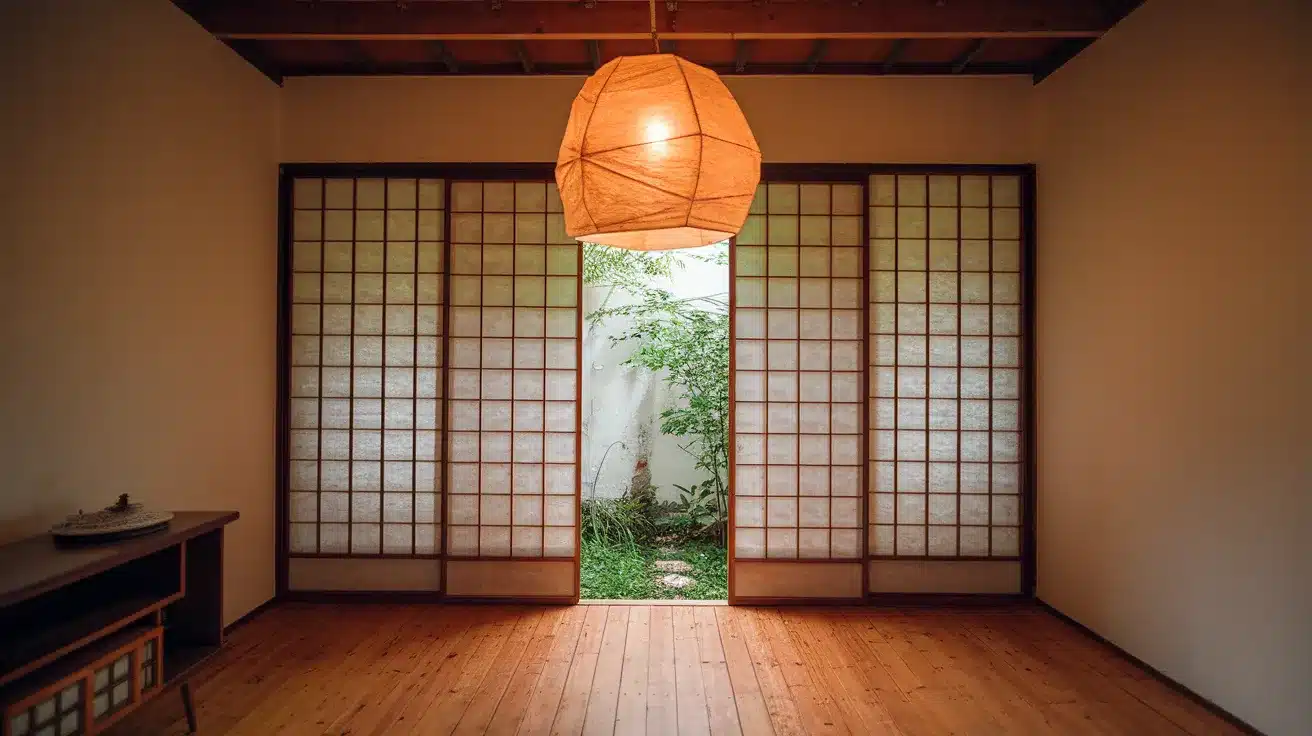
Rice paper in lamps or window panels softens the light entering the room. It adds a subtle texture while creating a warm and inviting glow.
Key points of this idea:
- Softens the light, enhancing the ambiance.
- Adds a traditional touch to the modern decor.
26. Silk Cushions
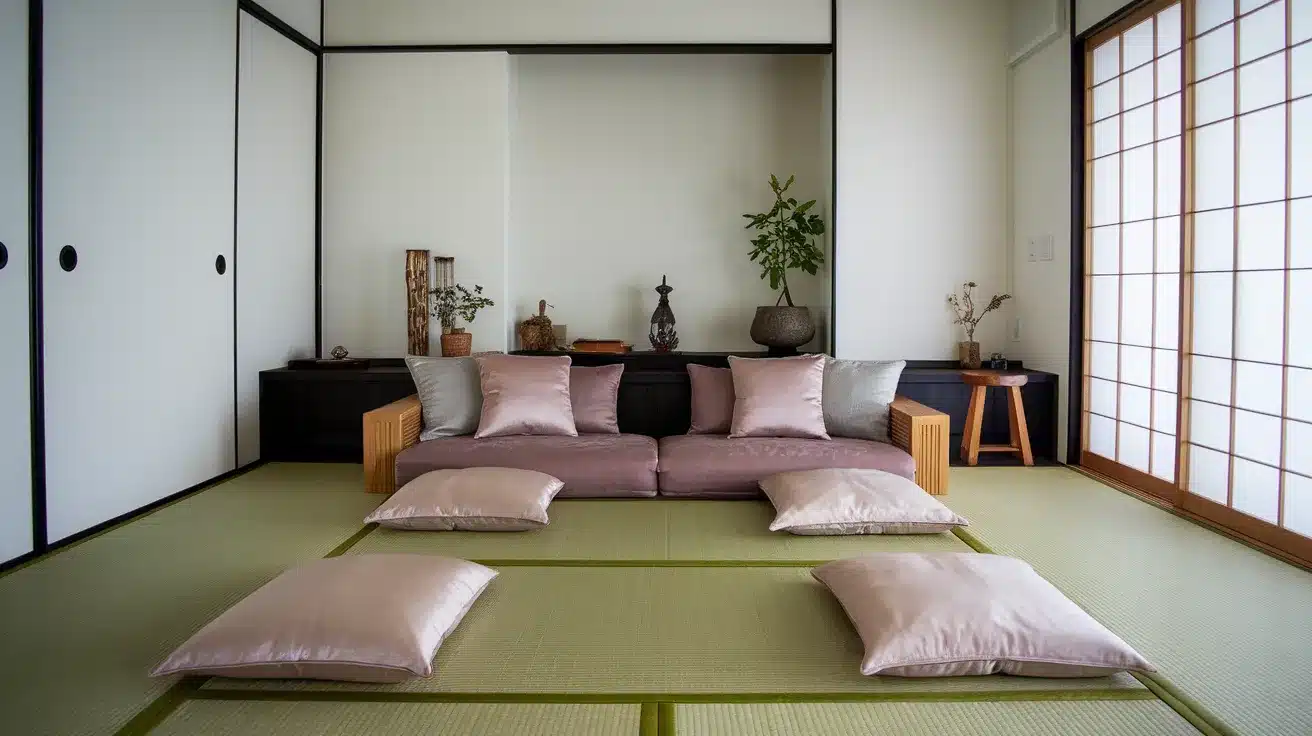
Silk cushions add a layer of comfort and subtle luxury to your living space. They pair well with low seating arrangements and minimalist designs.
Key points of this idea:
- Offers a soft and comfortable seating option.
- Upgrades the look of the room with a fine texture.
27. Simple Lines
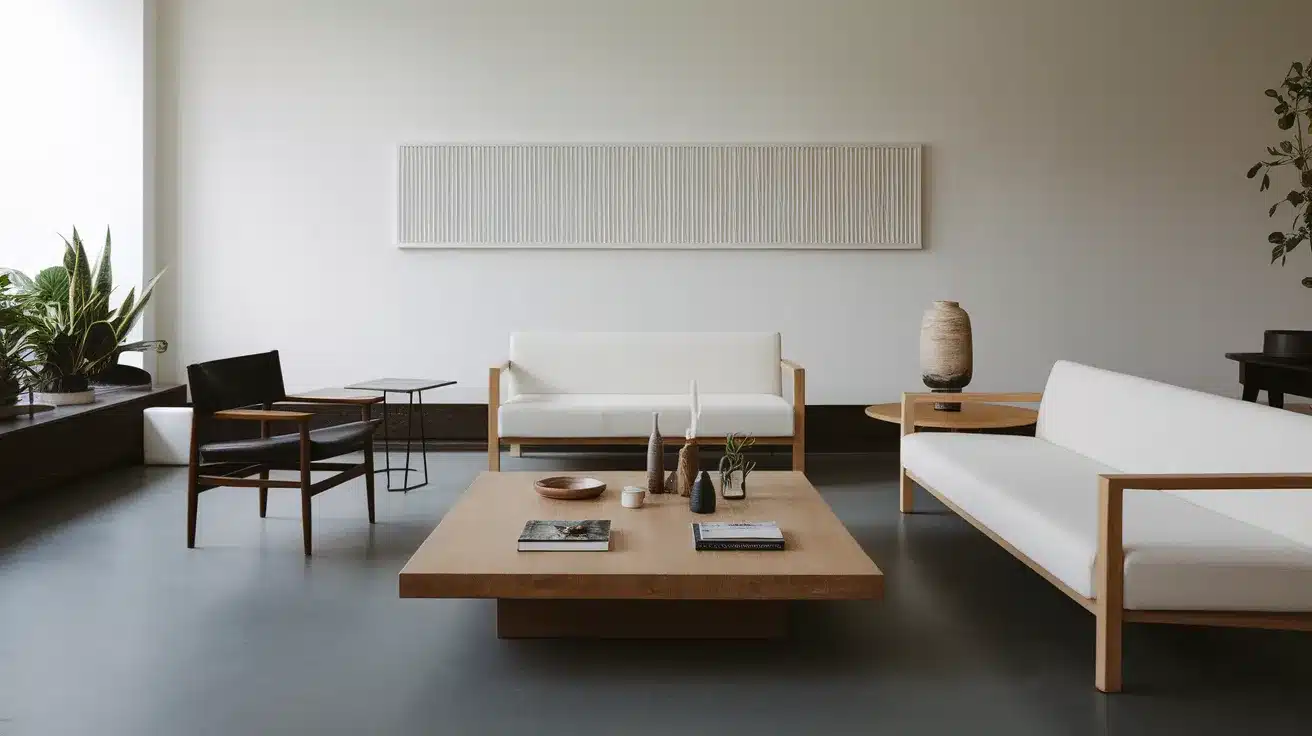
Using simple lines in furniture and decor keeps the design clean and uncluttered. This approach helps focus attention on the room’s overall harmony.
Key points of this idea:
- Enhances the sense of order and calm.
- Complements a minimalist decor style.
28. Sliding Doors
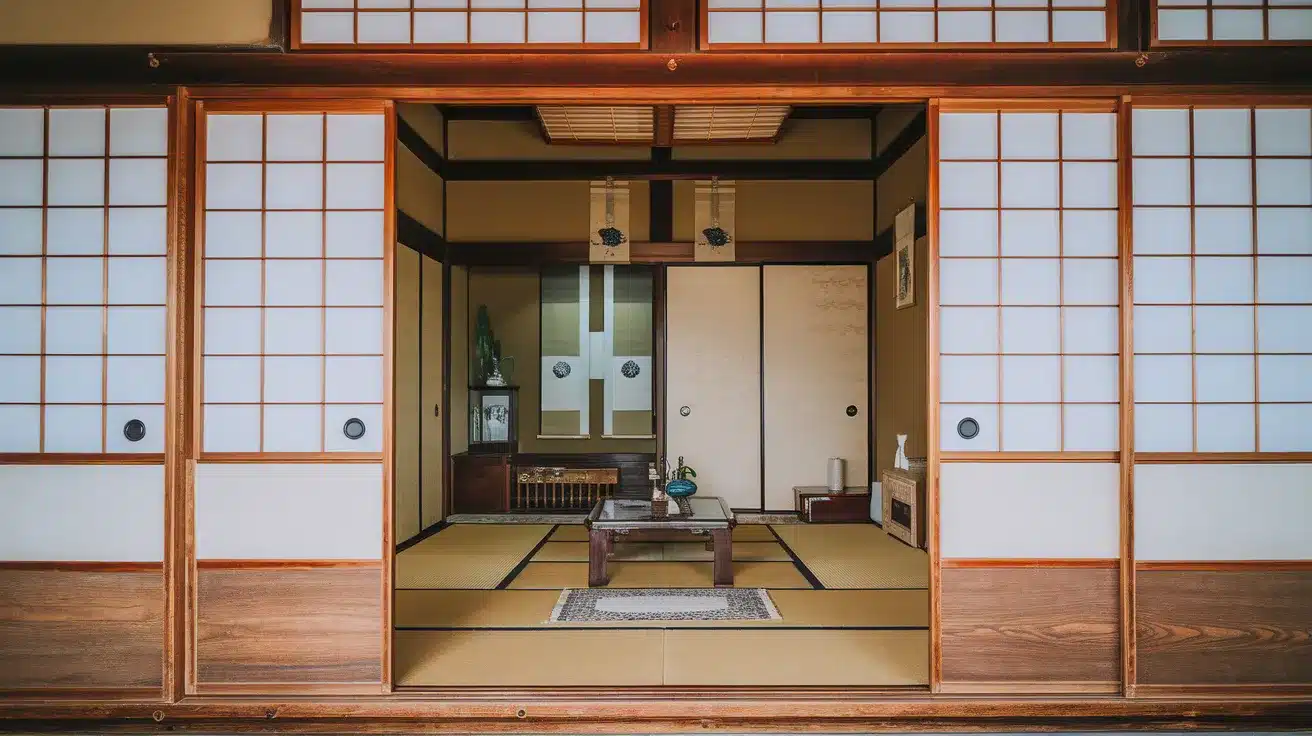
Sliding doors save space and maintain the minimalist look of the room. They are functional and add a traditional Japanese touch.
Key points of this idea:
- Makes the space more flexible and functional.
- Adds a classic Japanese touch to the decor.
29. Stone and Water Features
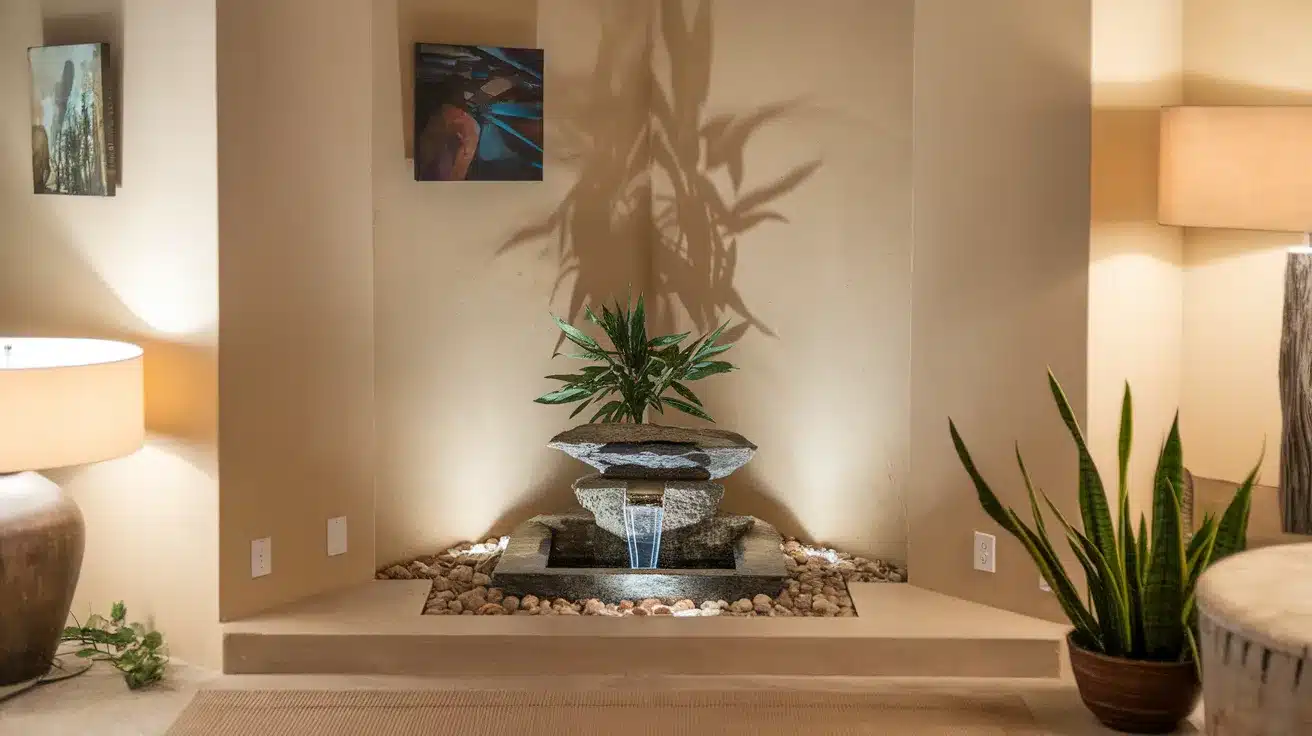
Adding small stone arrangements or water features creates a calming, natural vibe. These elements bring outdoor tranquility into the living room.
Key points of this idea:
- Brings a natural, calming element into the room.
- Reflects a connection with nature.
30. Suspended Ceilings
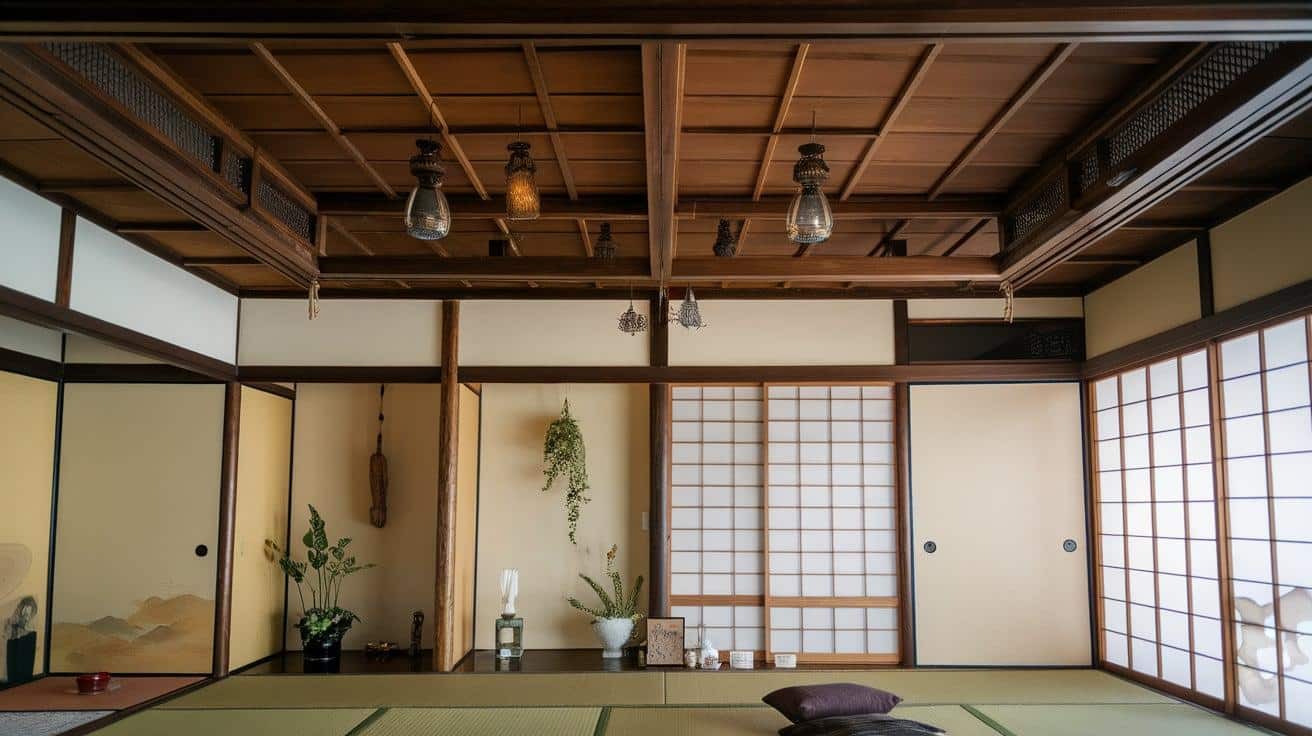
Suspended ceilings add depth and visual interest to the room. They also create a sense of art detail without overcrowding the space.
Key points of this idea:
- It enhances the look of the room.
- Creates visual separation without affecting the openness.
31. Tatami Mat Flooring
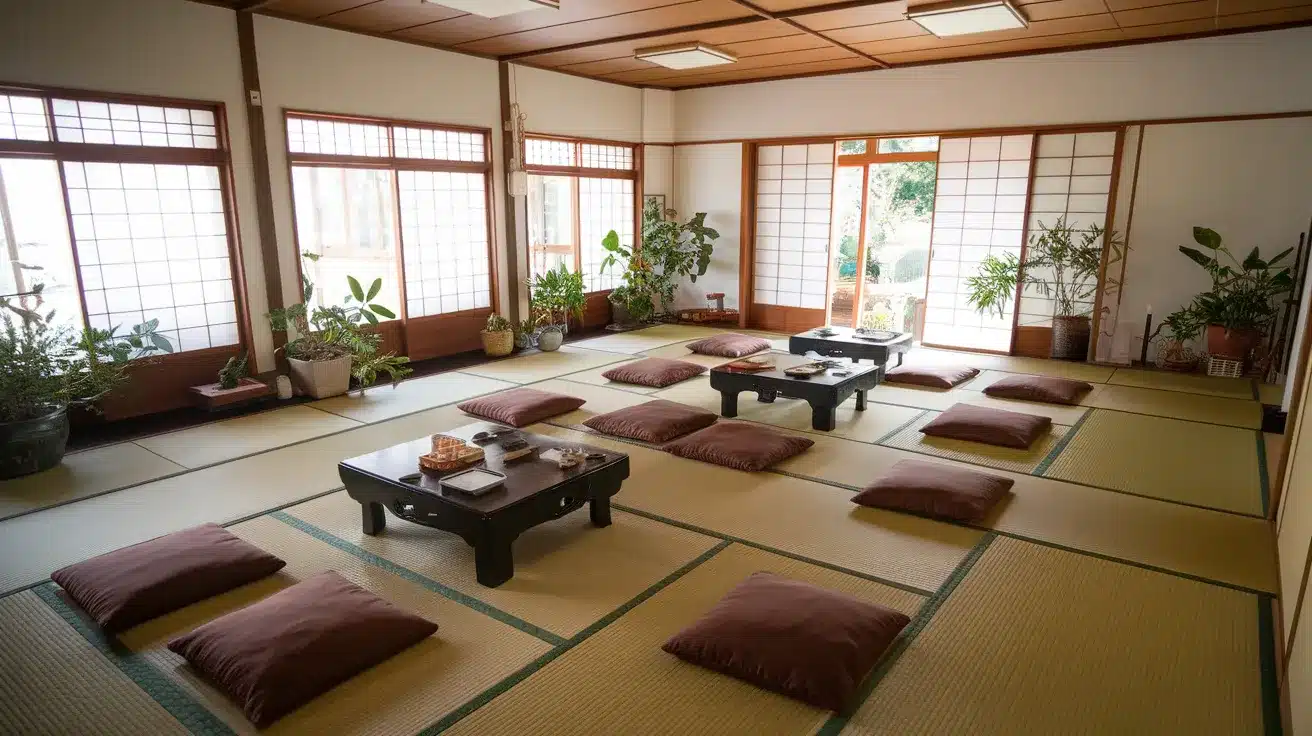
Tatami mats are a traditional flooring option that adds warmth and texture. They are both functional and decorative, offering comfort underfoot.
Key points of this idea:
- Provides a traditional and practical flooring option.
- Adds warmth and texture to the room.
32. Tea Ceremony Corner
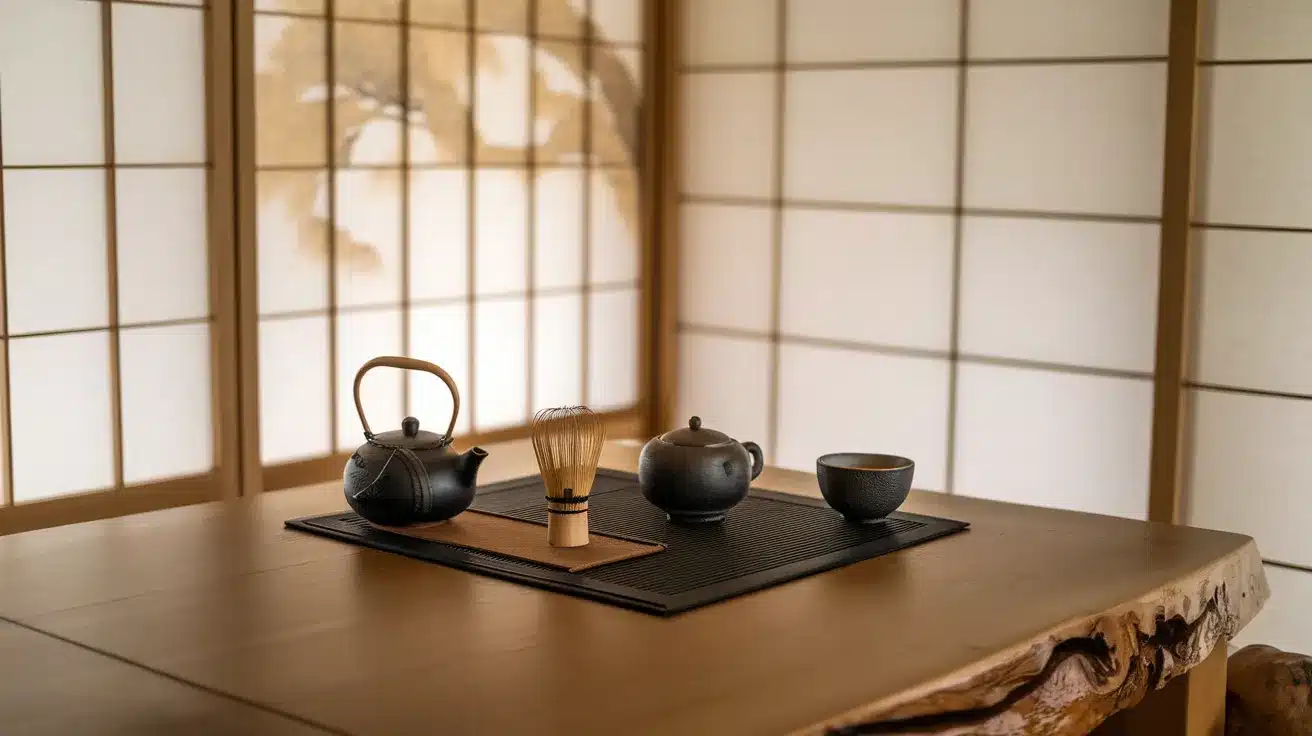
A dedicated tea ceremony corner highlights the importance of mindfulness and tradition. It provides a peaceful area for quiet moments and gatherings.
Key points of this idea:
- Serves as a quiet area for reflection and gathering.
- Adds cultural value to the living space.
33. Tokonoma Alcove
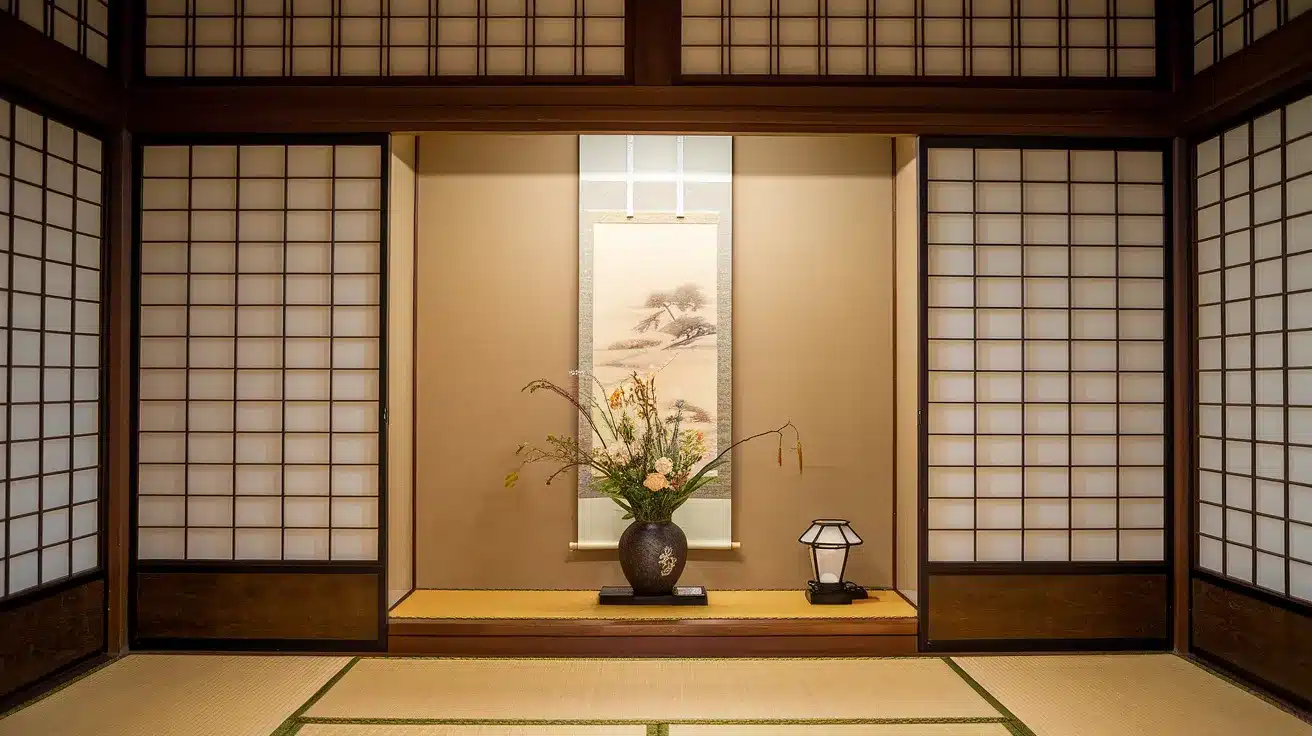
A tokonoma alcove is a small recessed area used to display art or flowers. It creates a focal point and brings a traditional design element to the room.
Key points of this idea:
- Creates a dedicated space to highlight special items.
- Reflects the traditional style of Japanese homes.
34. Traditional Art Pieces
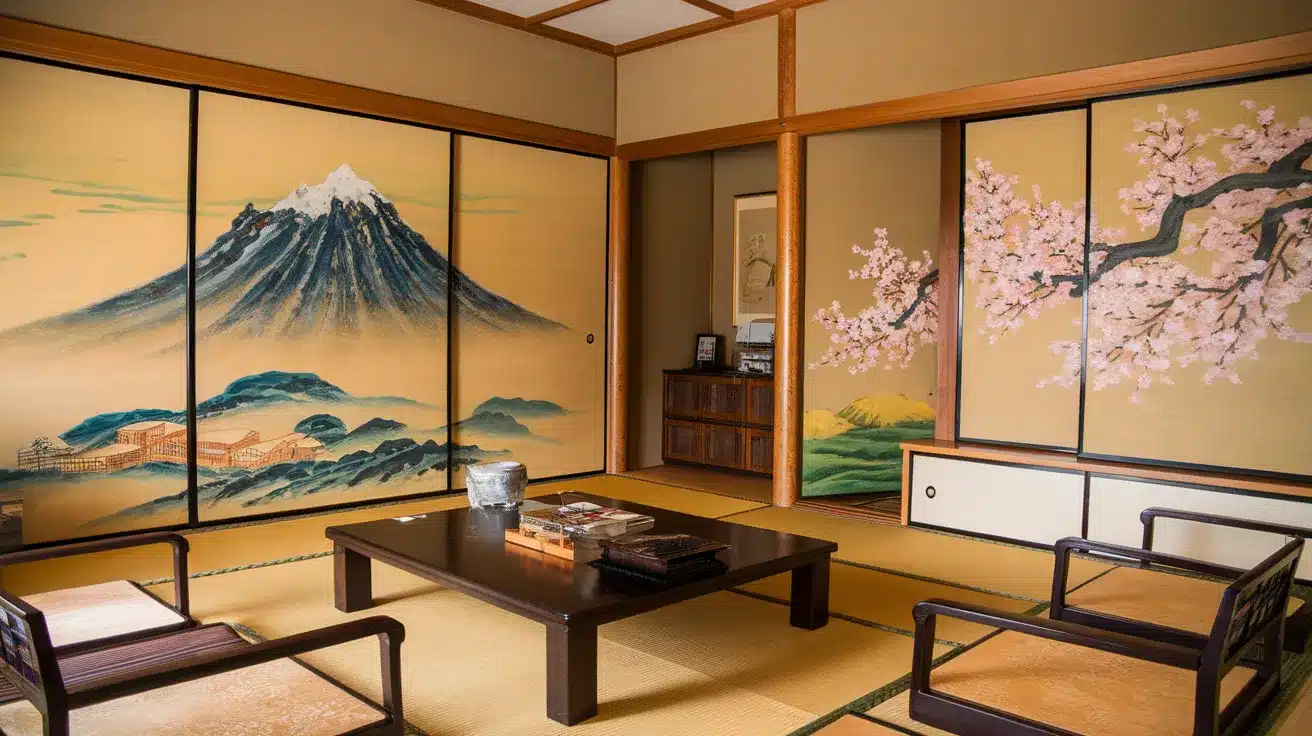
Displaying traditional art, such as landscapes or nature-inspired designs, connects your room to Japanese culture. It also adds a unique visual element to the space.
Key points of this idea:
- Adds cultural depth to the room’s decor.
- Complements the overall theme of the living space.
35. Vertical Garden
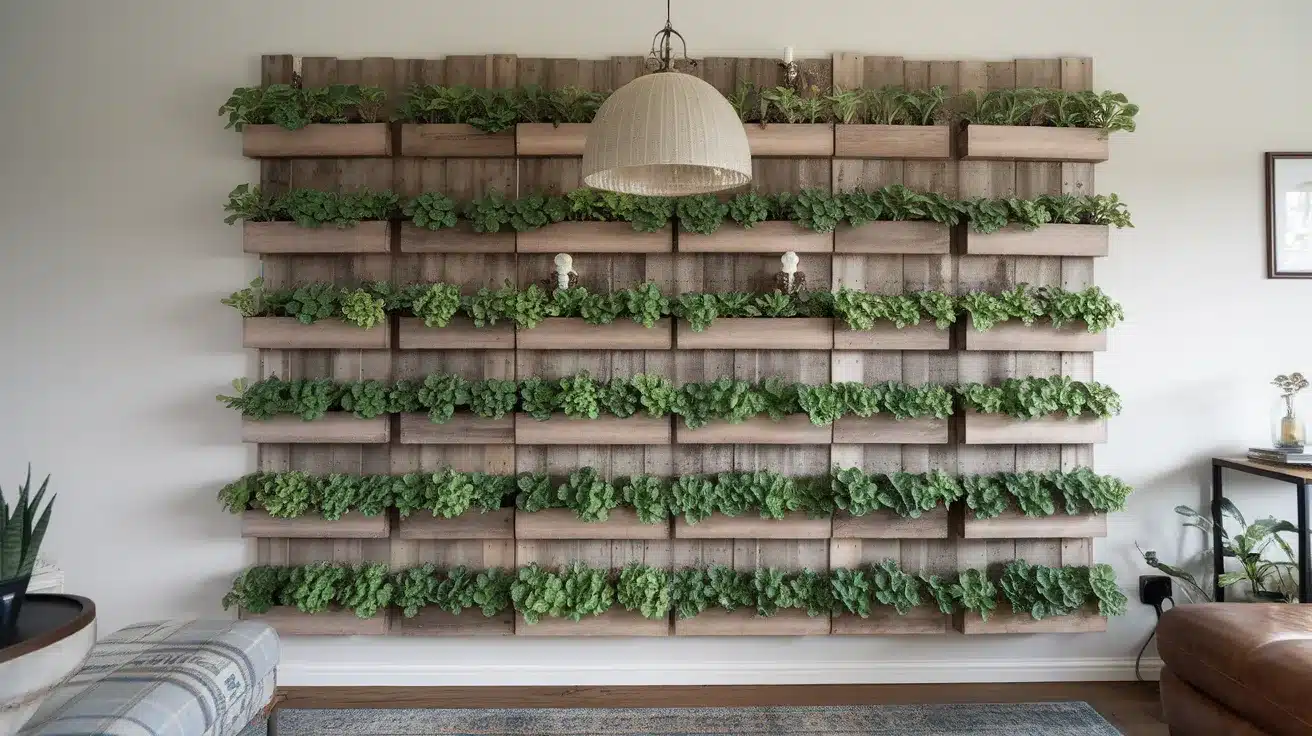
A vertical garden introduces greenery in a modern, space-efficient way. It refreshes the room and brings nature indoors.
Key points of this idea:
- Enhances the natural vibe of the living room.
- It adds a modern touch while keeping the space fresh and lively.
36. Wooden Beam Accents
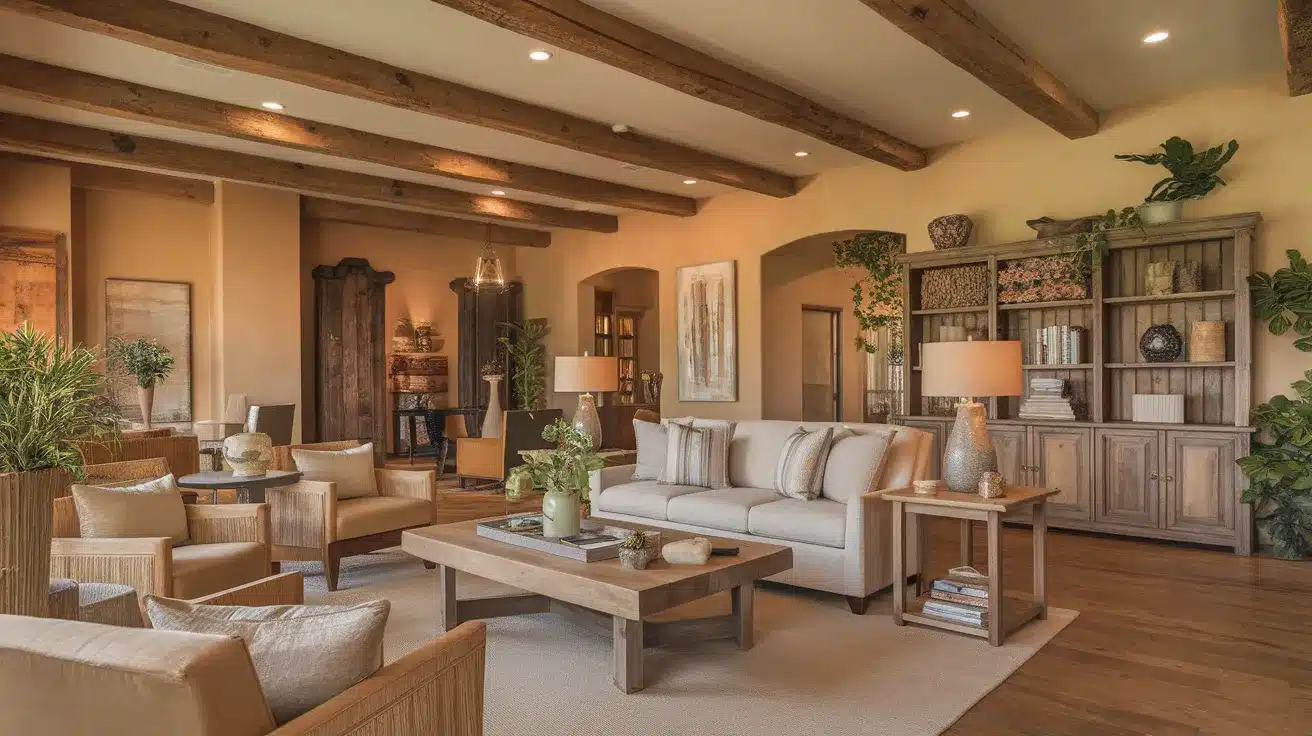
Exposed wooden beams bring warmth and a rustic feel to the living room. They highlight natural materials while adding structure and texture.
Key points of this idea:
- Highlights natural materials in the structure.
- Adds warmth and texture to the overall design.
The Bottom Line
That’s all the inspiration you need to start your Japanese design expedition. Remember, you don’t need to tackle everything at once.
Start small – maybe with some cozy floor cushions or a simple bamboo plant – and see how it feels. The best part about Japanese design is that it grows with you, letting you add elements as you go.
If you welcome the minimalist vibes, play with natural materials, or create a peaceful tea corner, ensure it fits your lifestyle and makes you feel at home.
After all, Japanese design is about—creating a space that brings calm to your daily life.
Ready to get started? Pick your favorite design from our list and take that first step. Your perfect, zen-inspired living room is closer than you think.

